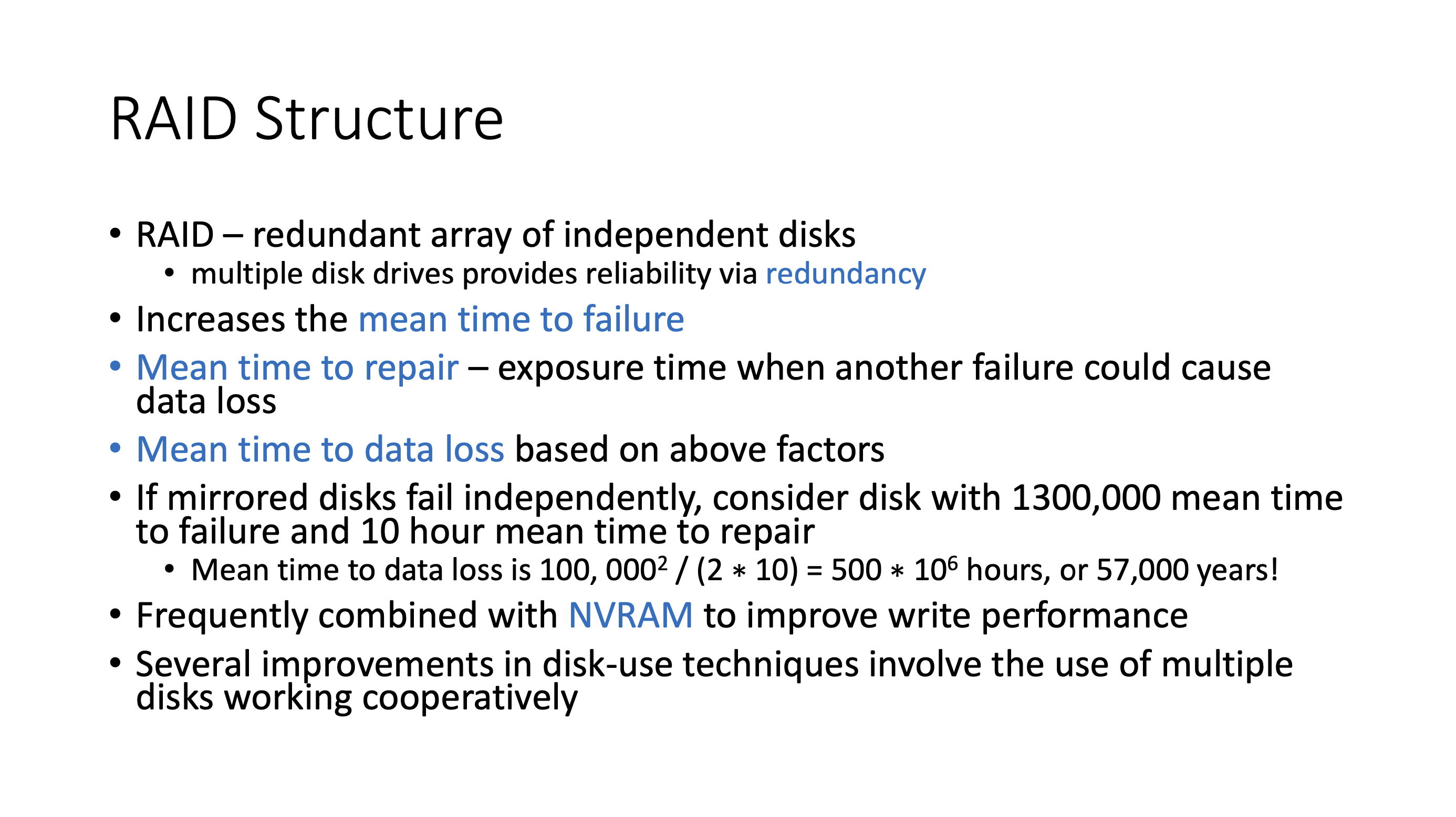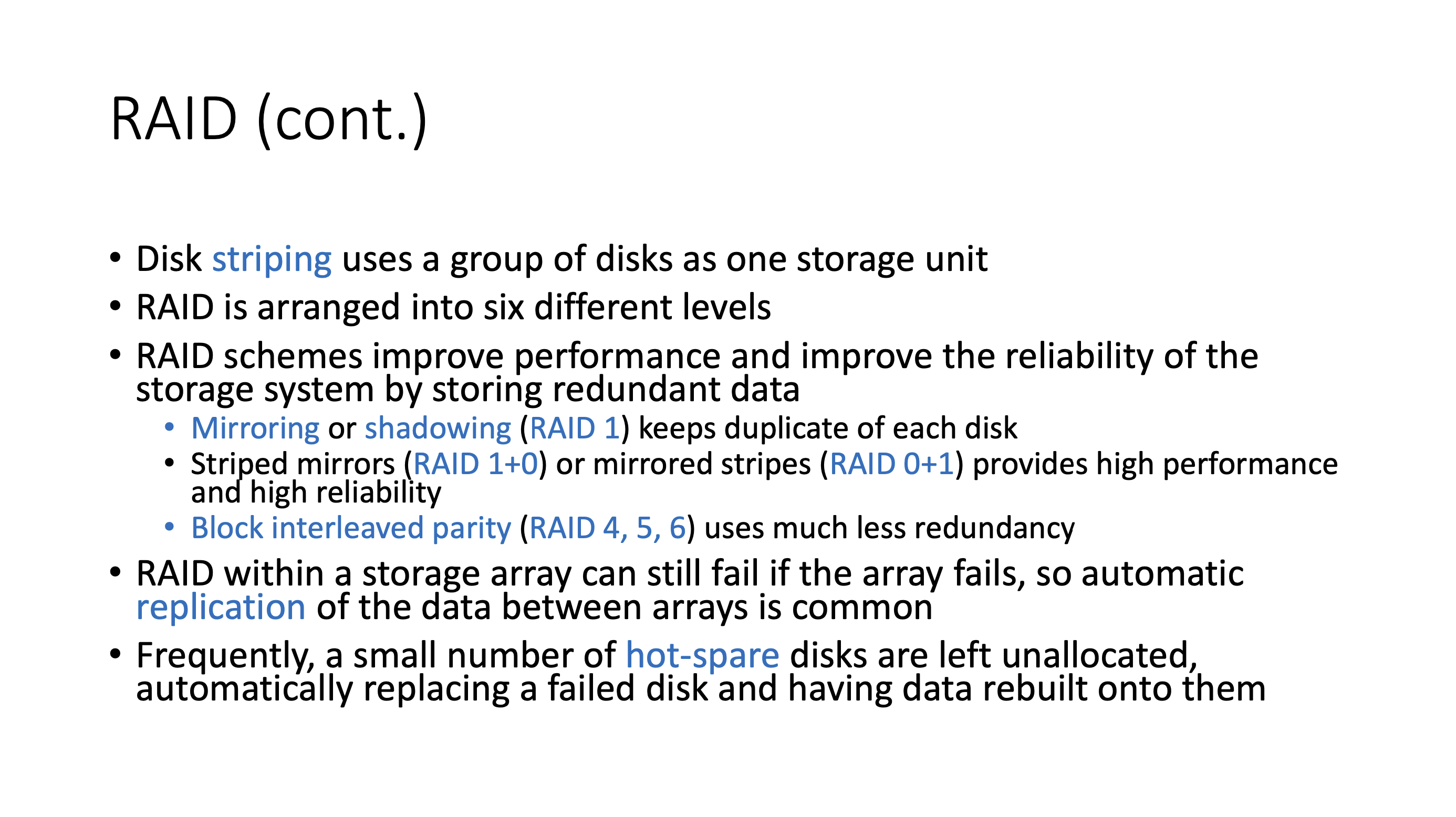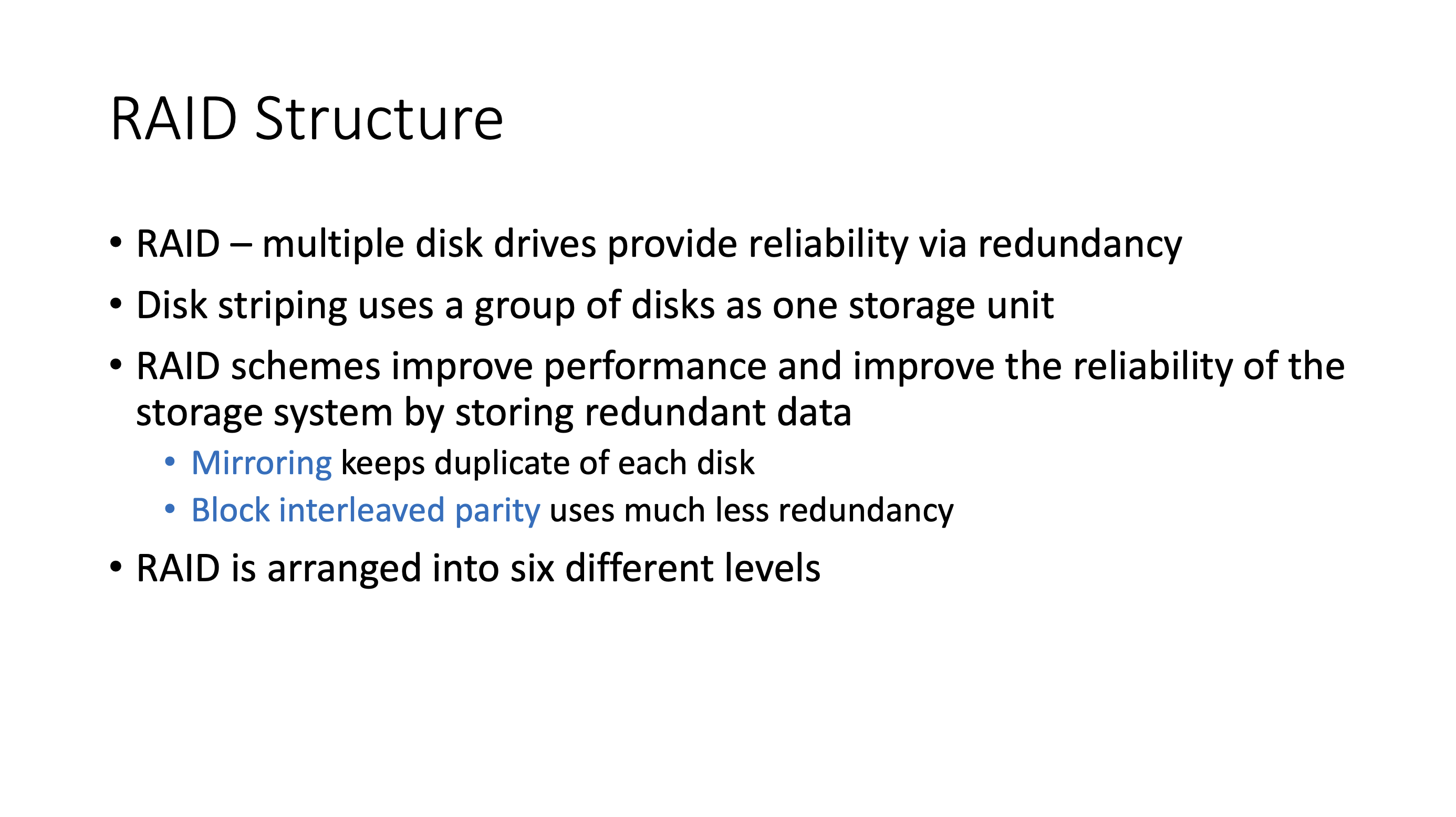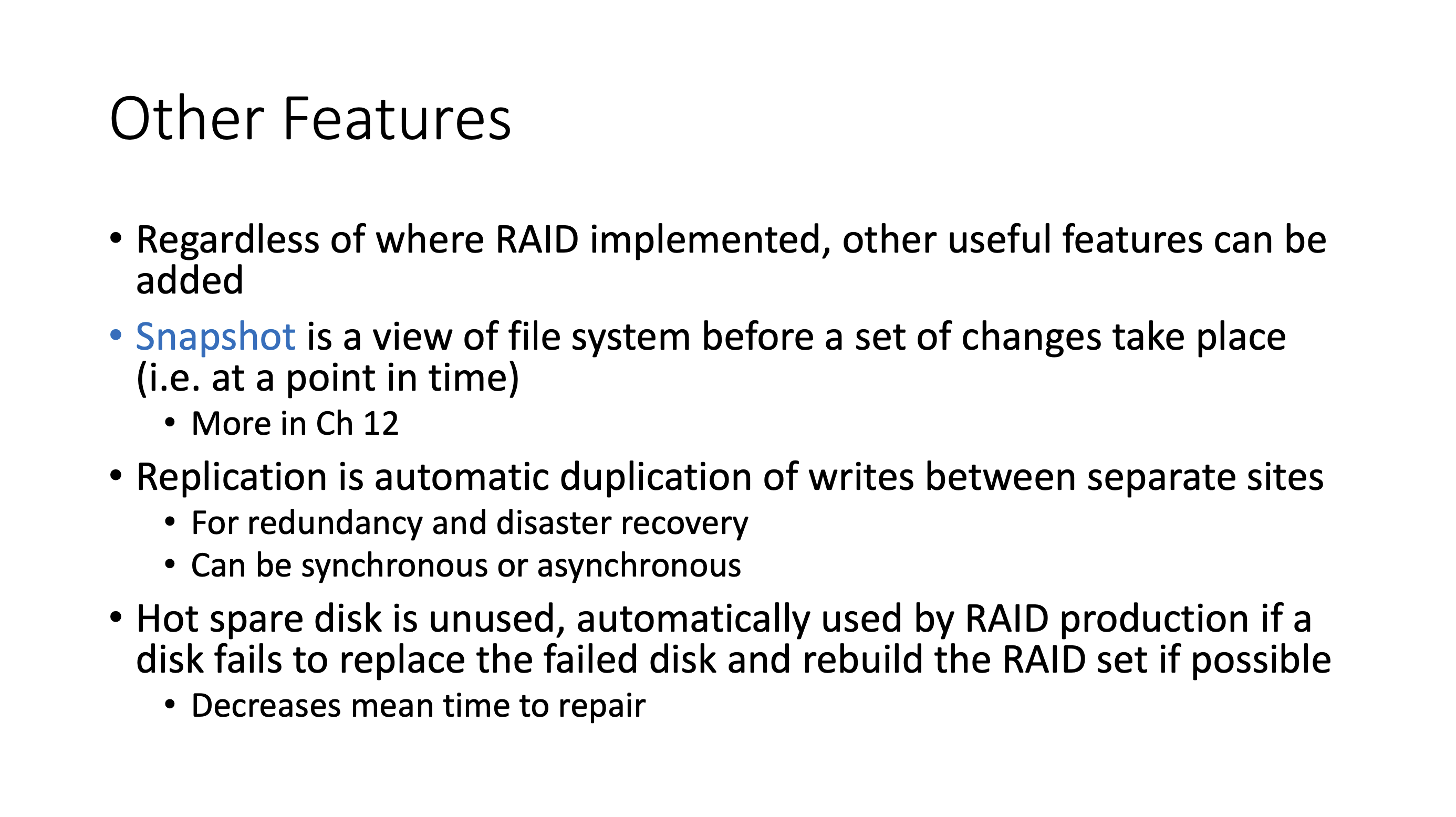Mass storage #
Magnetic disks #
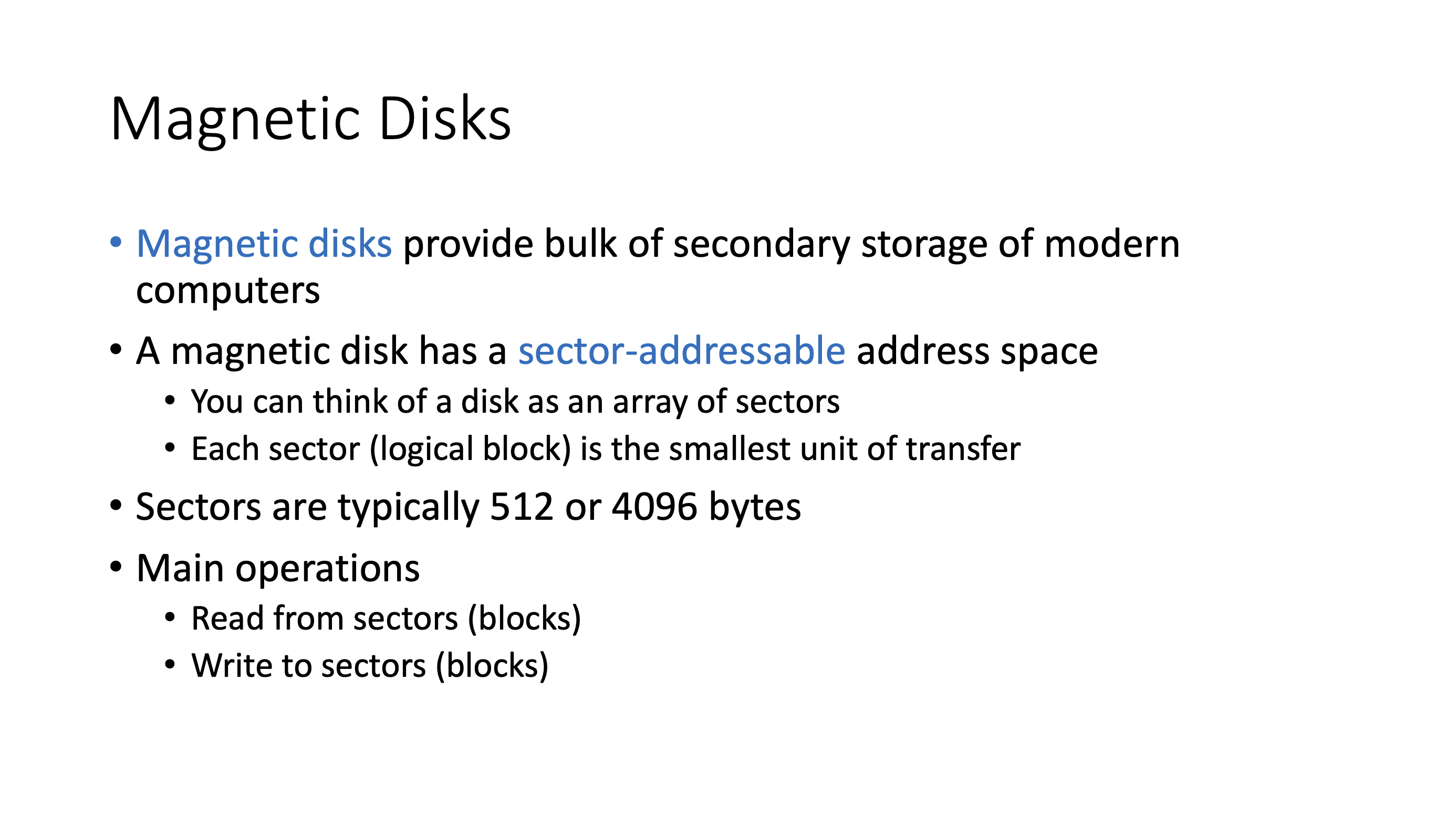
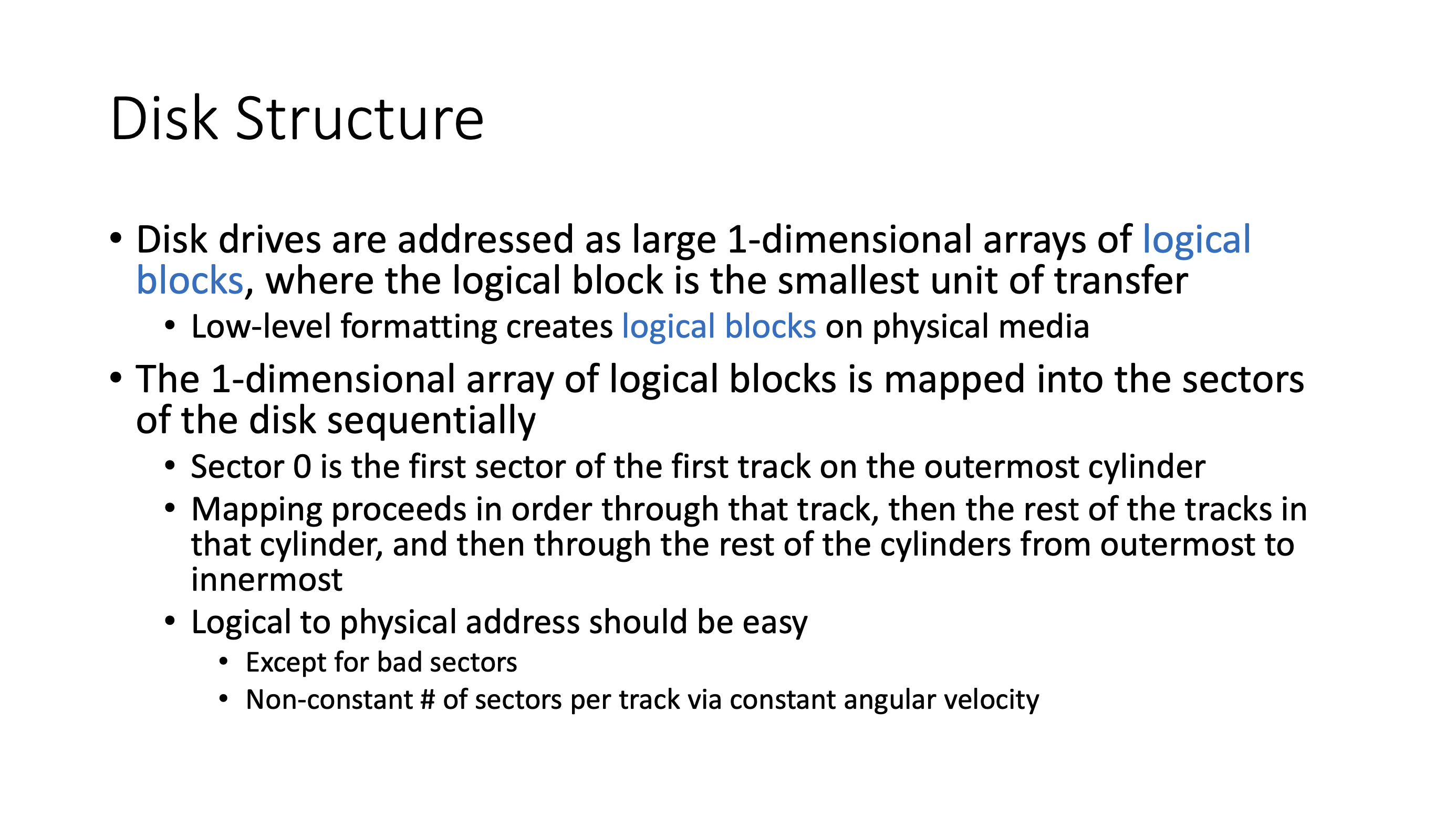
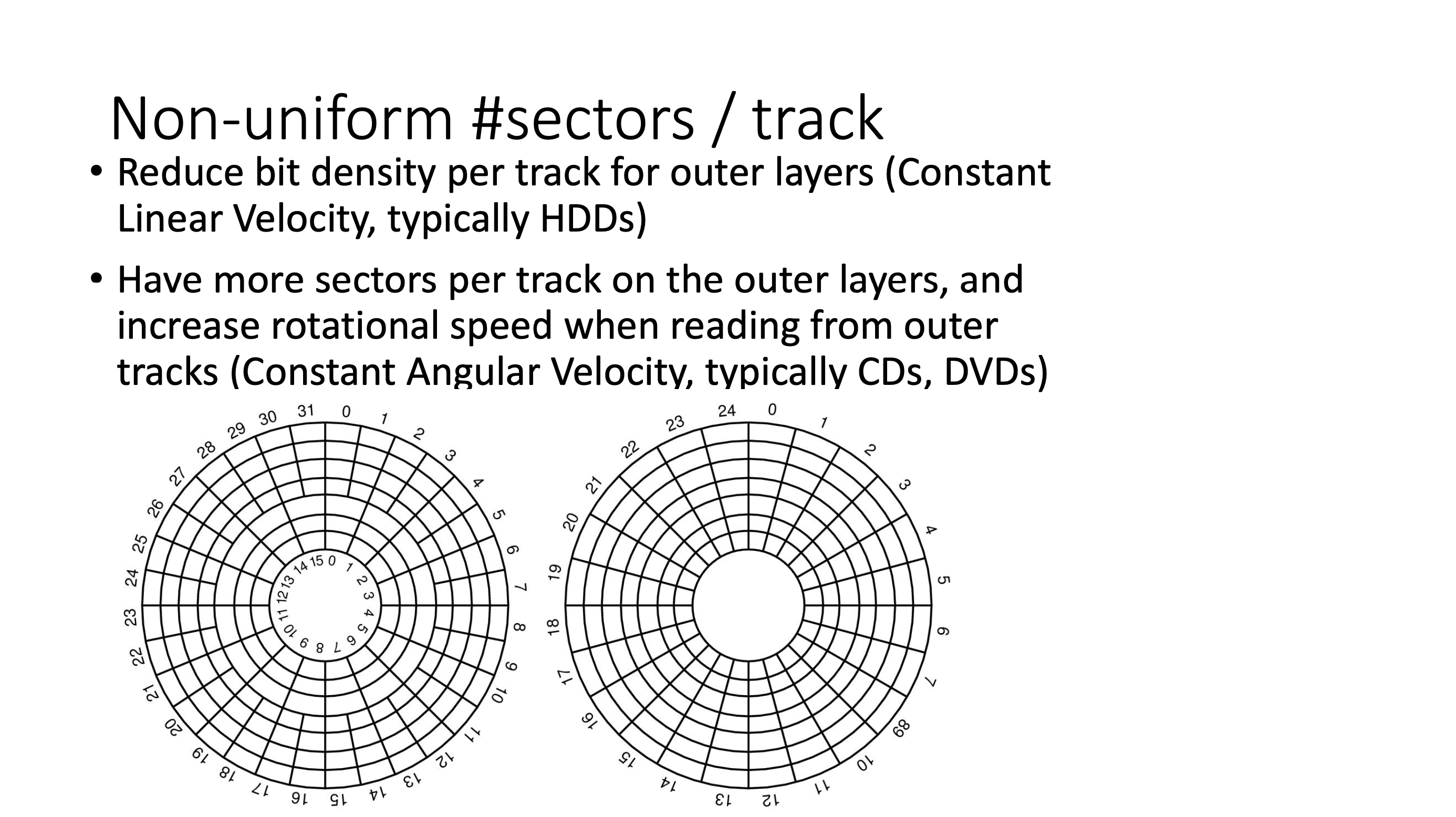
- we want to keep the same rate of data moving under the head.
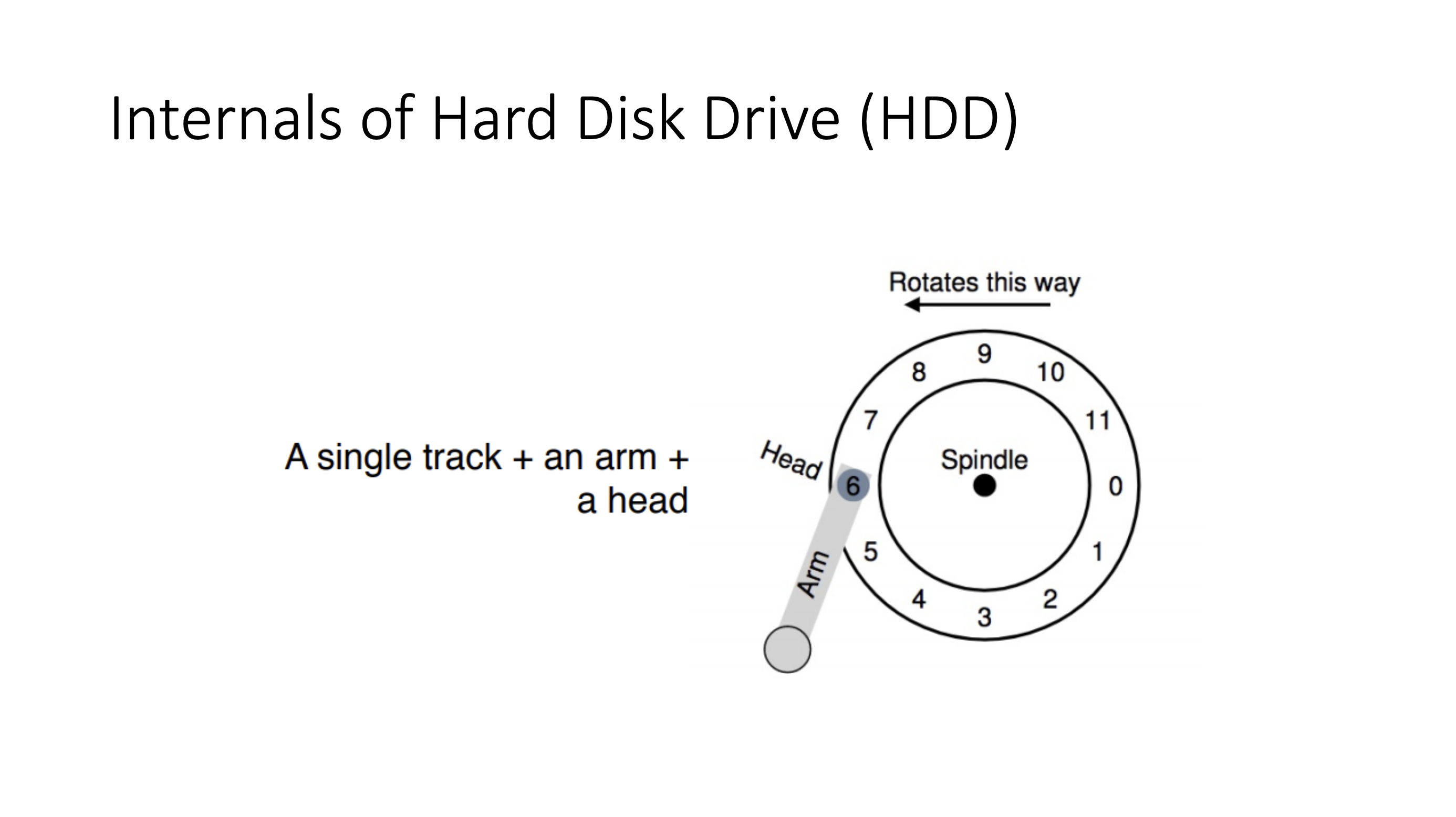
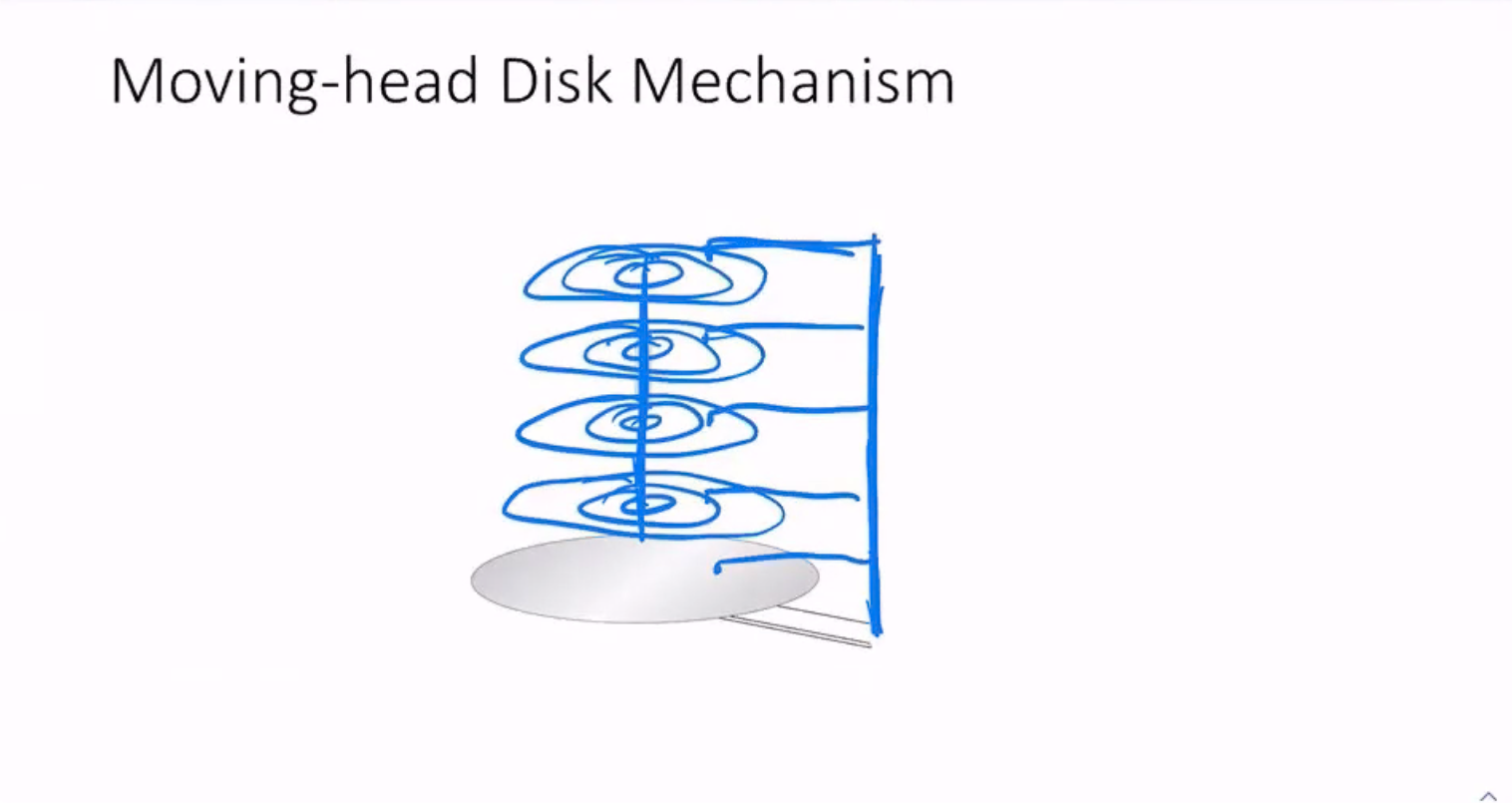
- a track is 2D but the entire disk is 3D
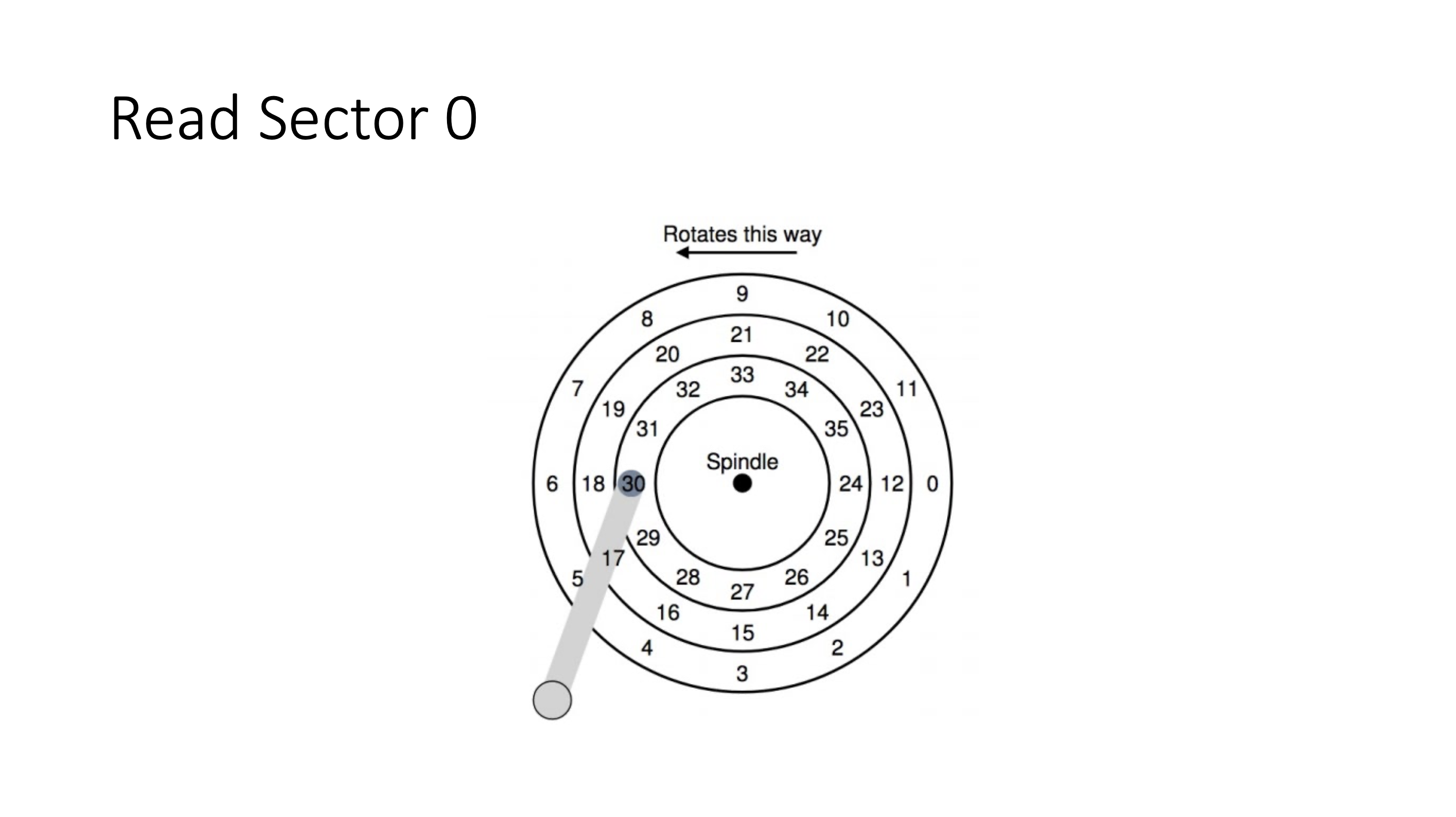
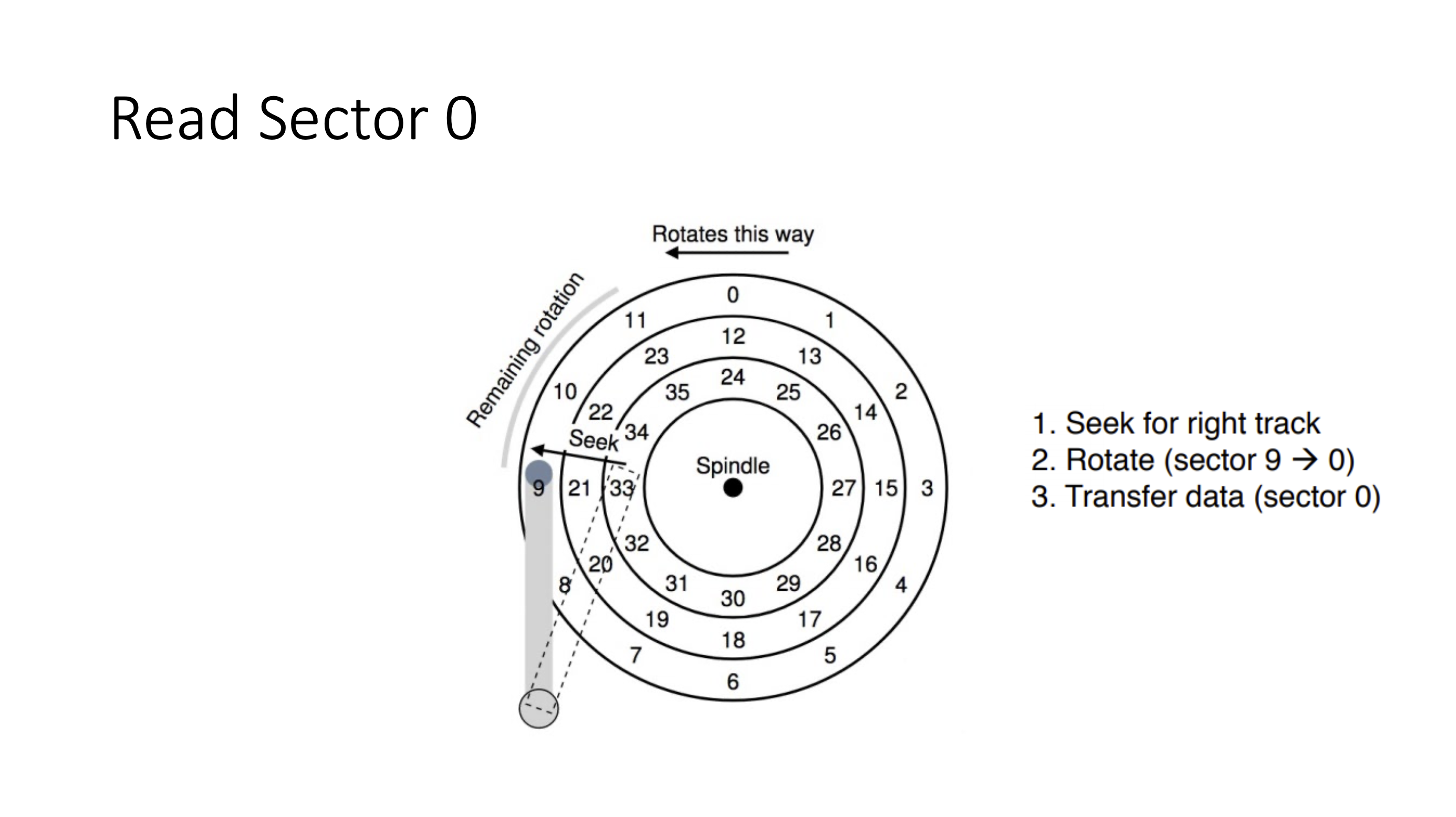
Watch: Inside of a hard disk drive
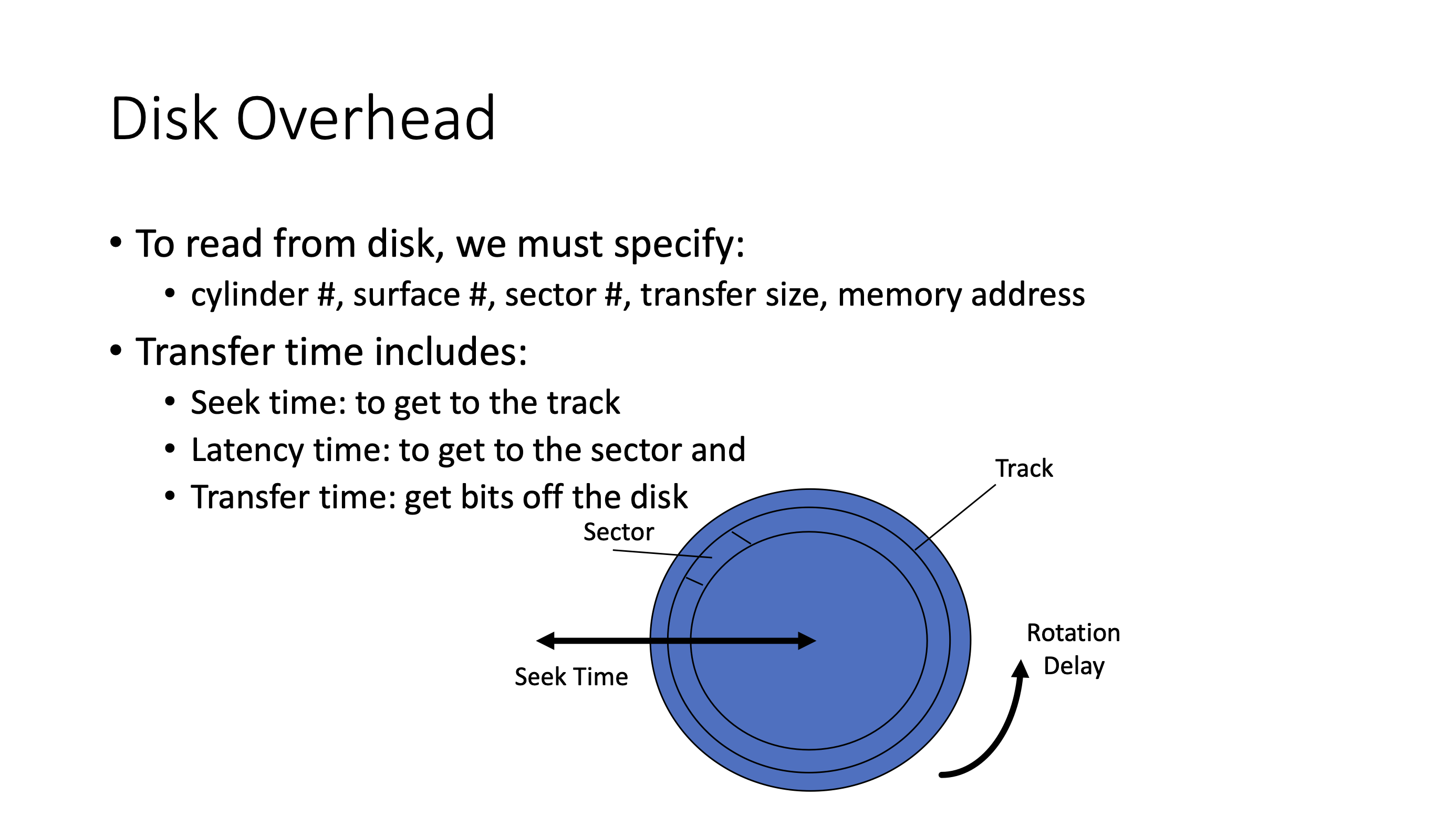
Disk performance #
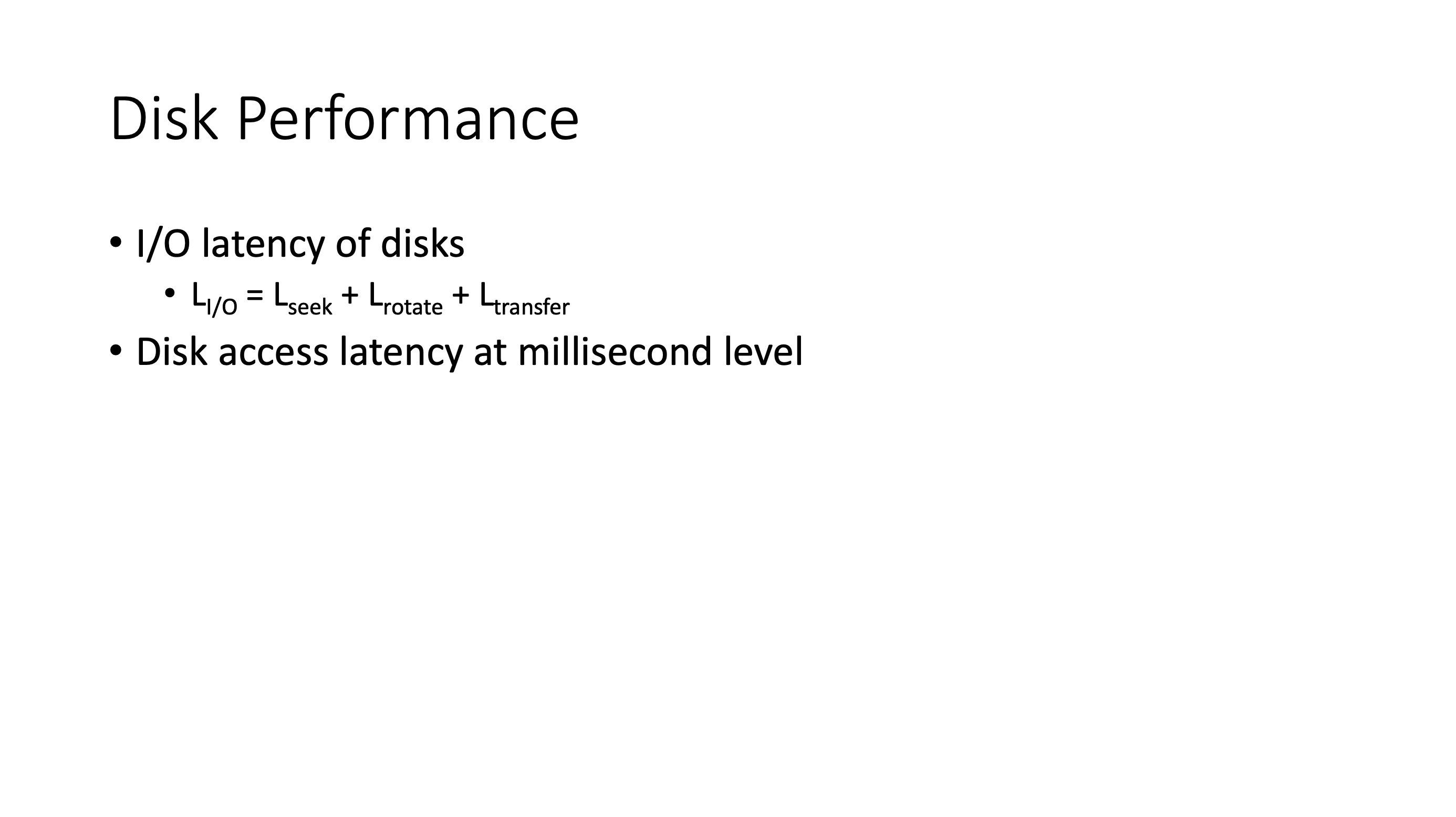
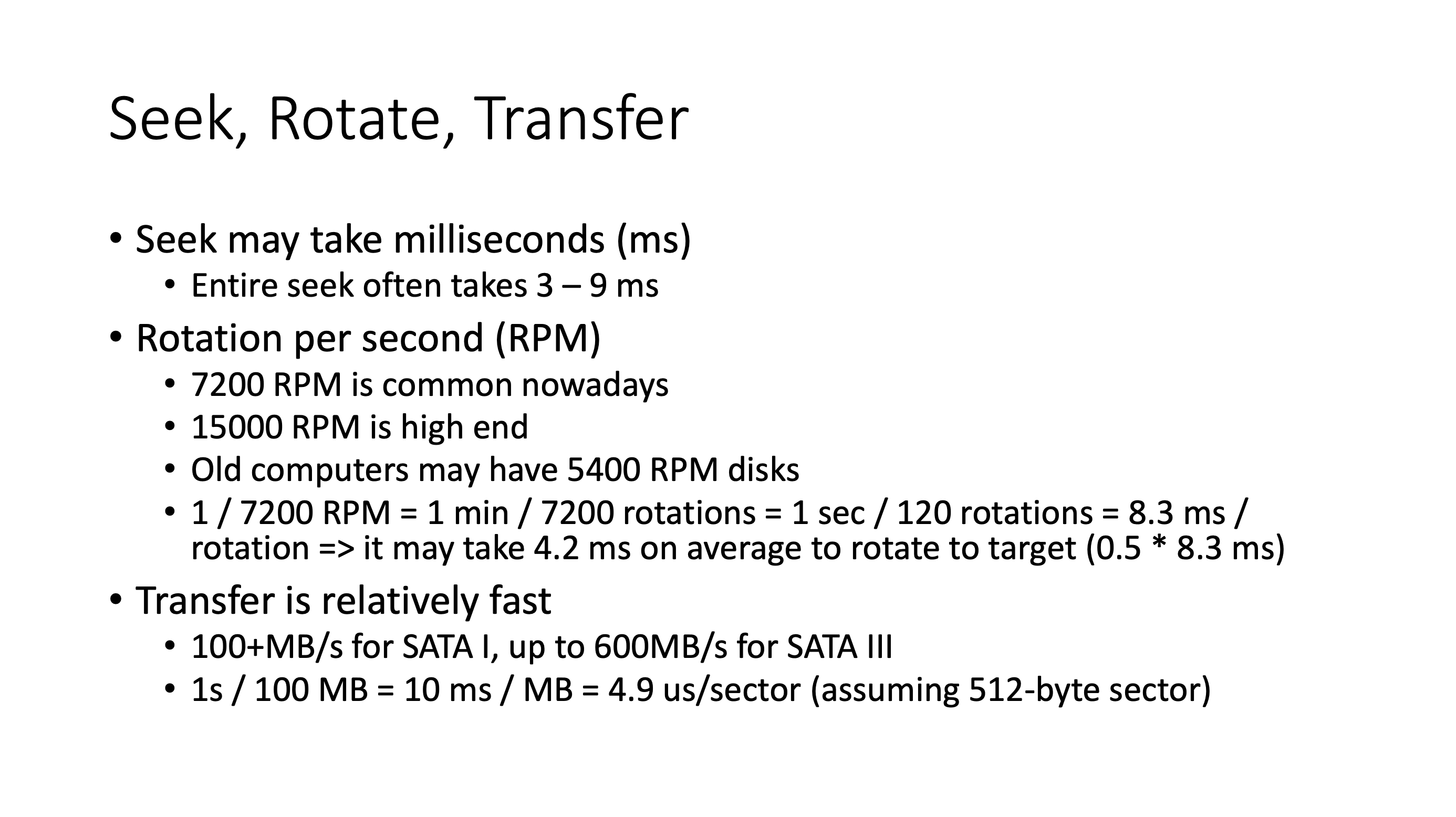
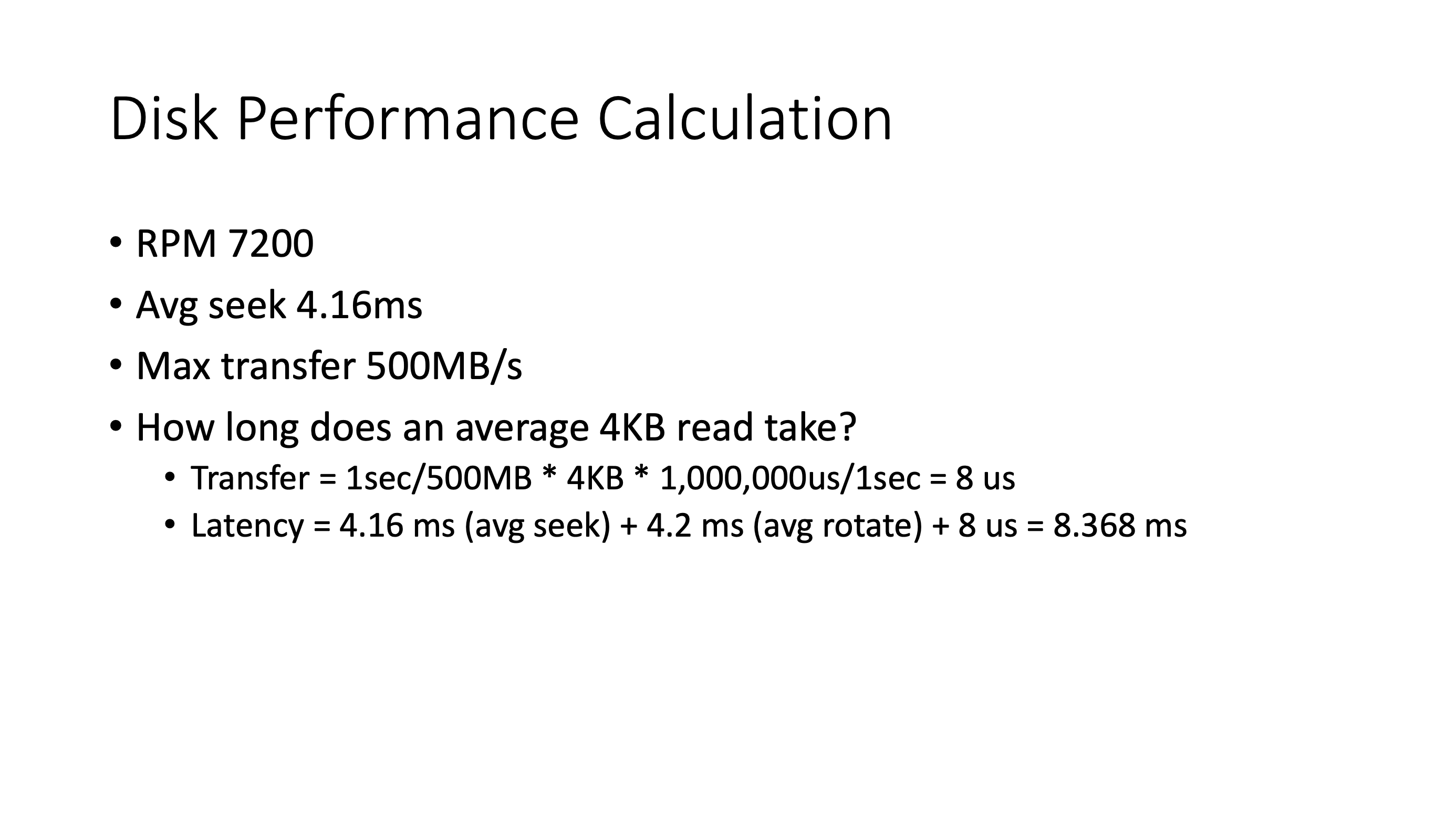
- seek and rotate times dominate the total latency
- hard disks are at the milisecond level
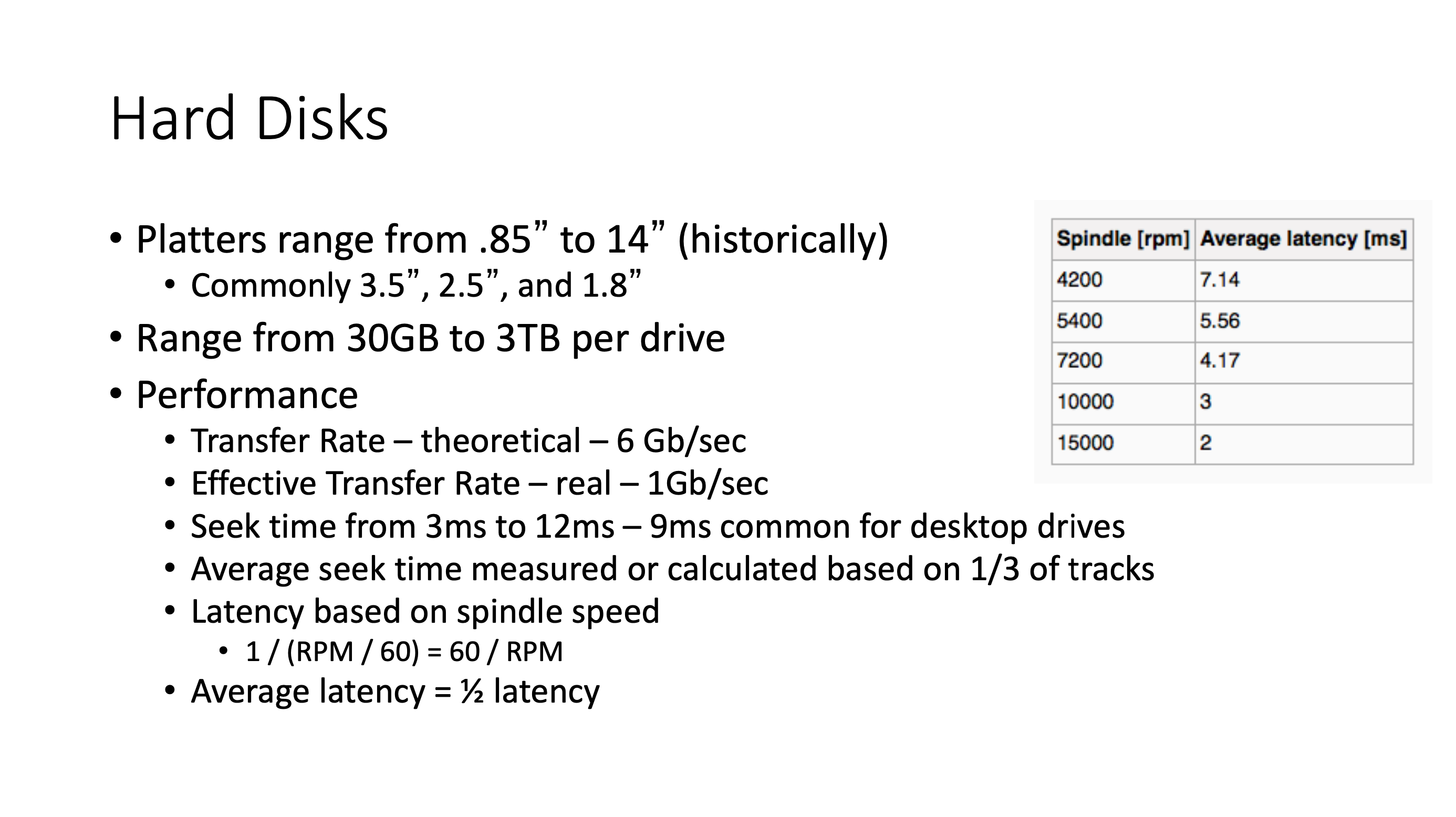
Disk history #
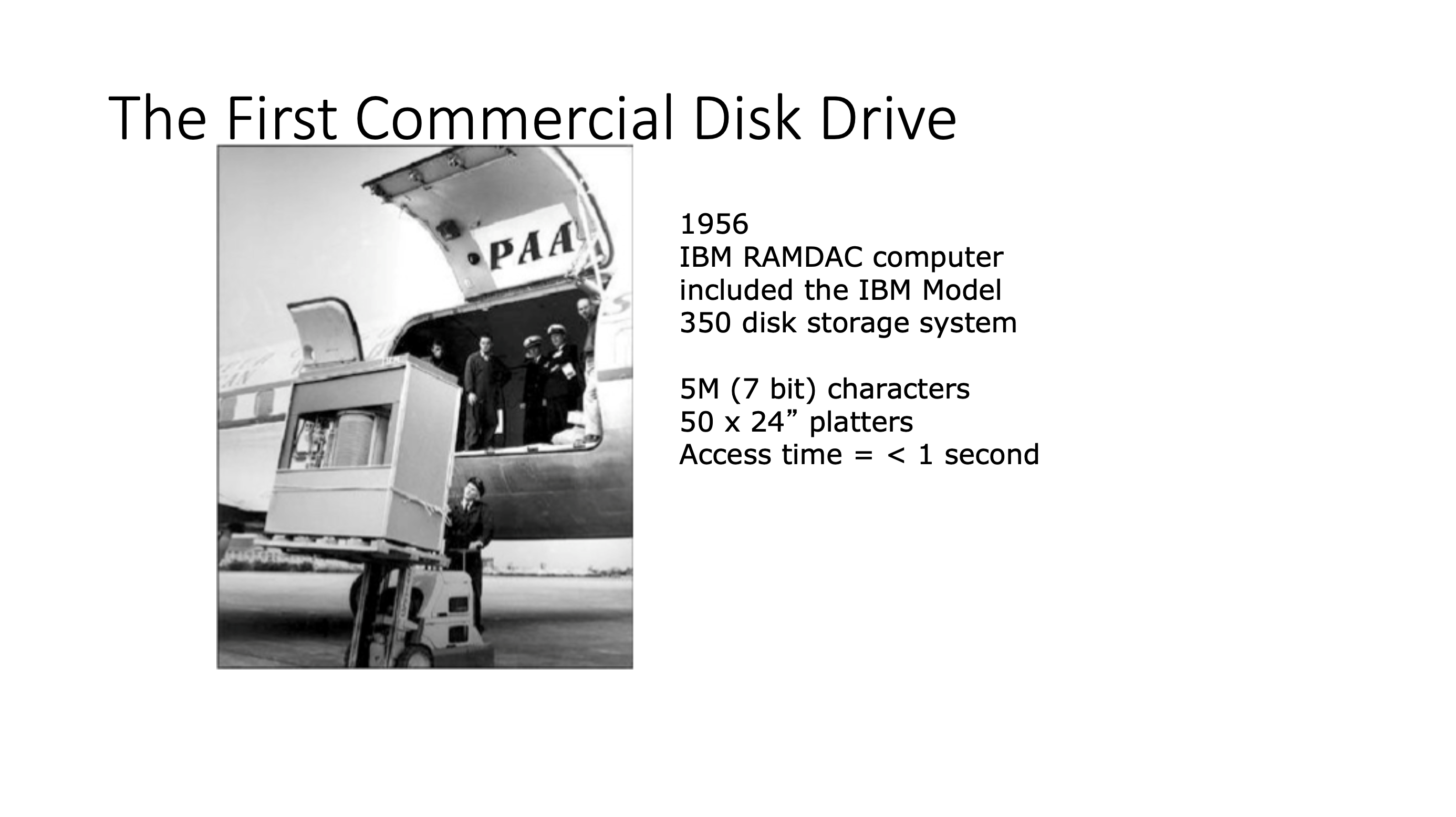
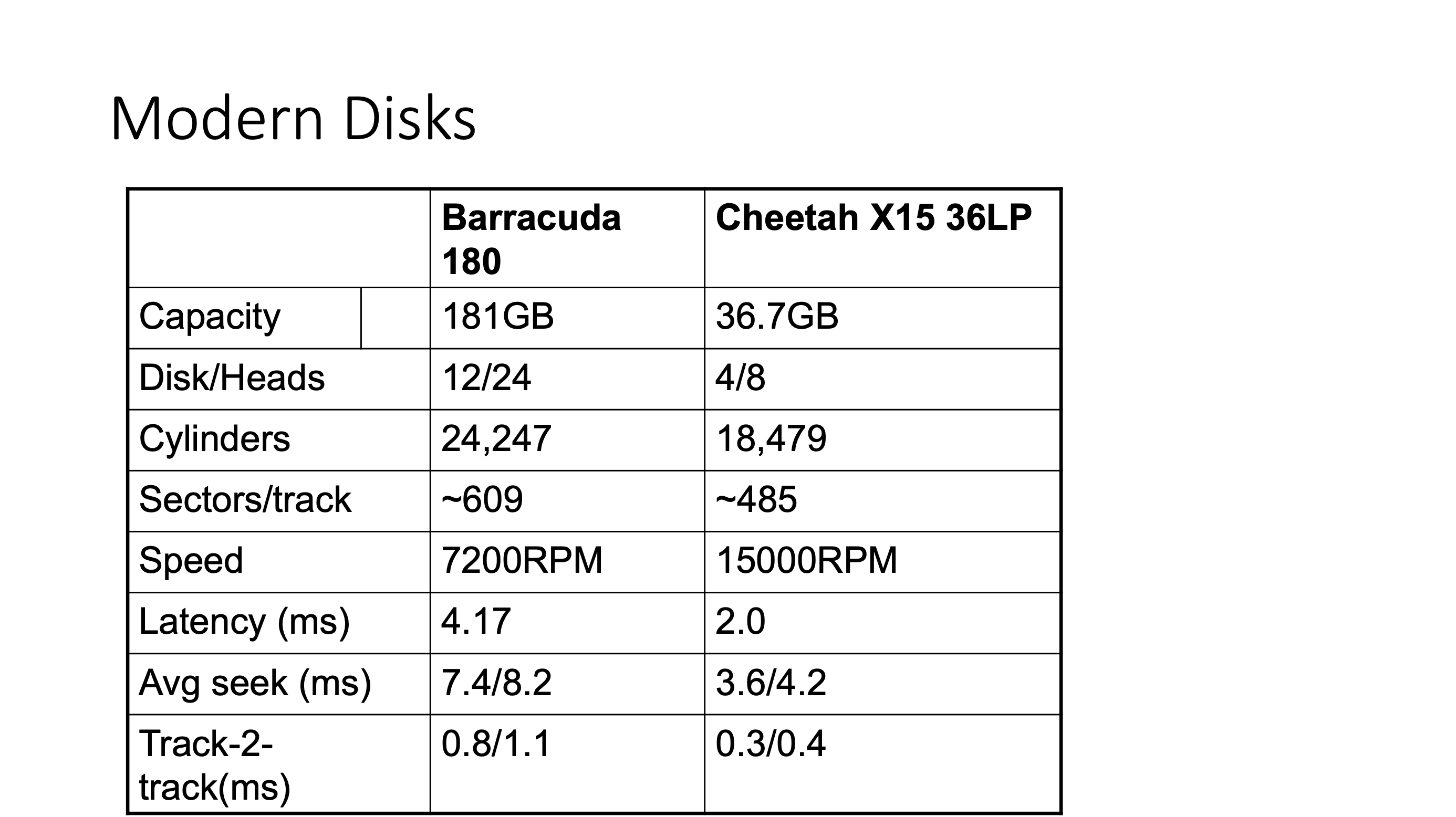
Solid state disks #
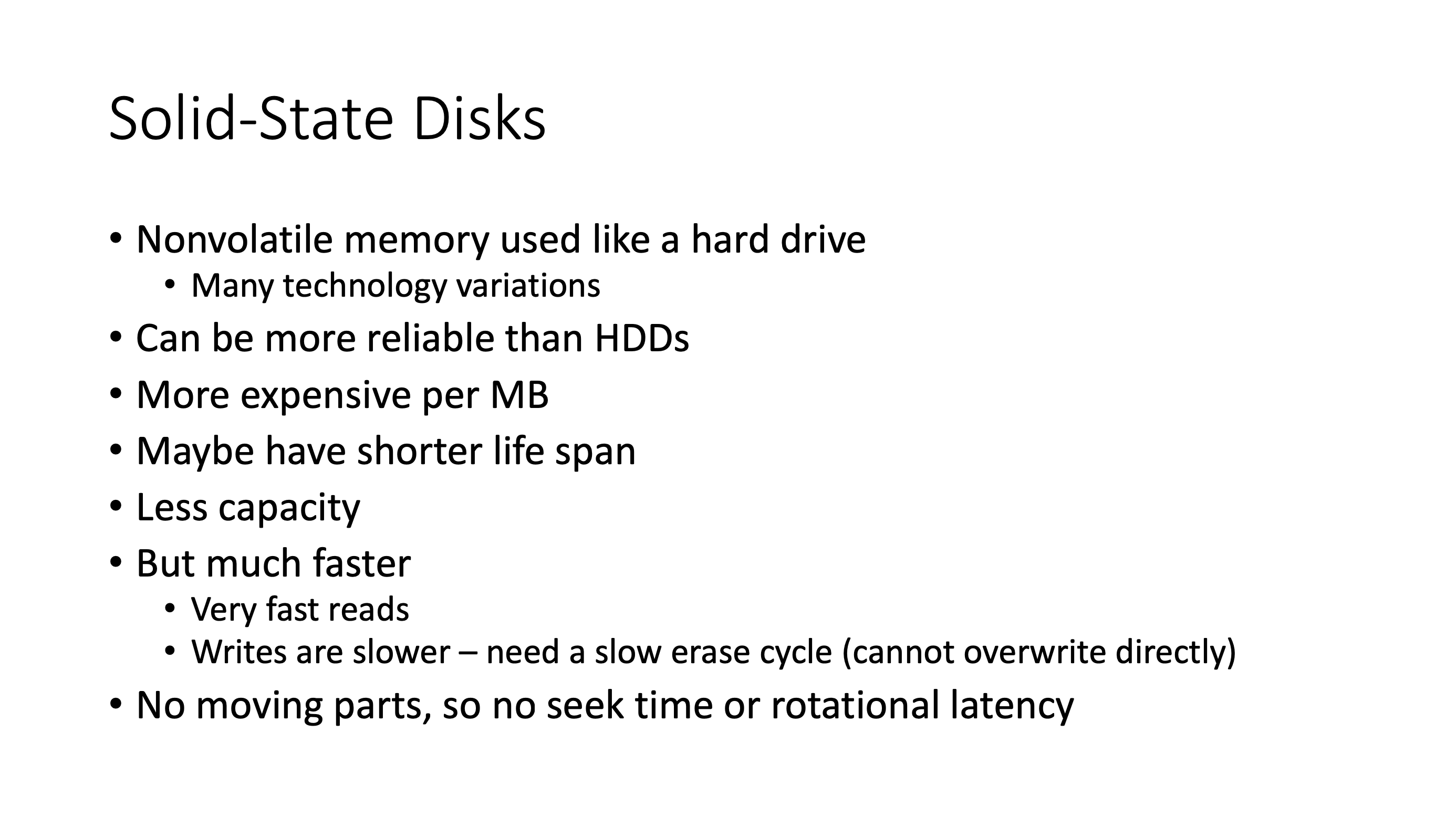
- SSDs are generally faster because they do not have any moving parts, thus no seek and rotate times, this greatly speeds up the total latency
- SSDs are at the microsecond level
Magnetic tape #
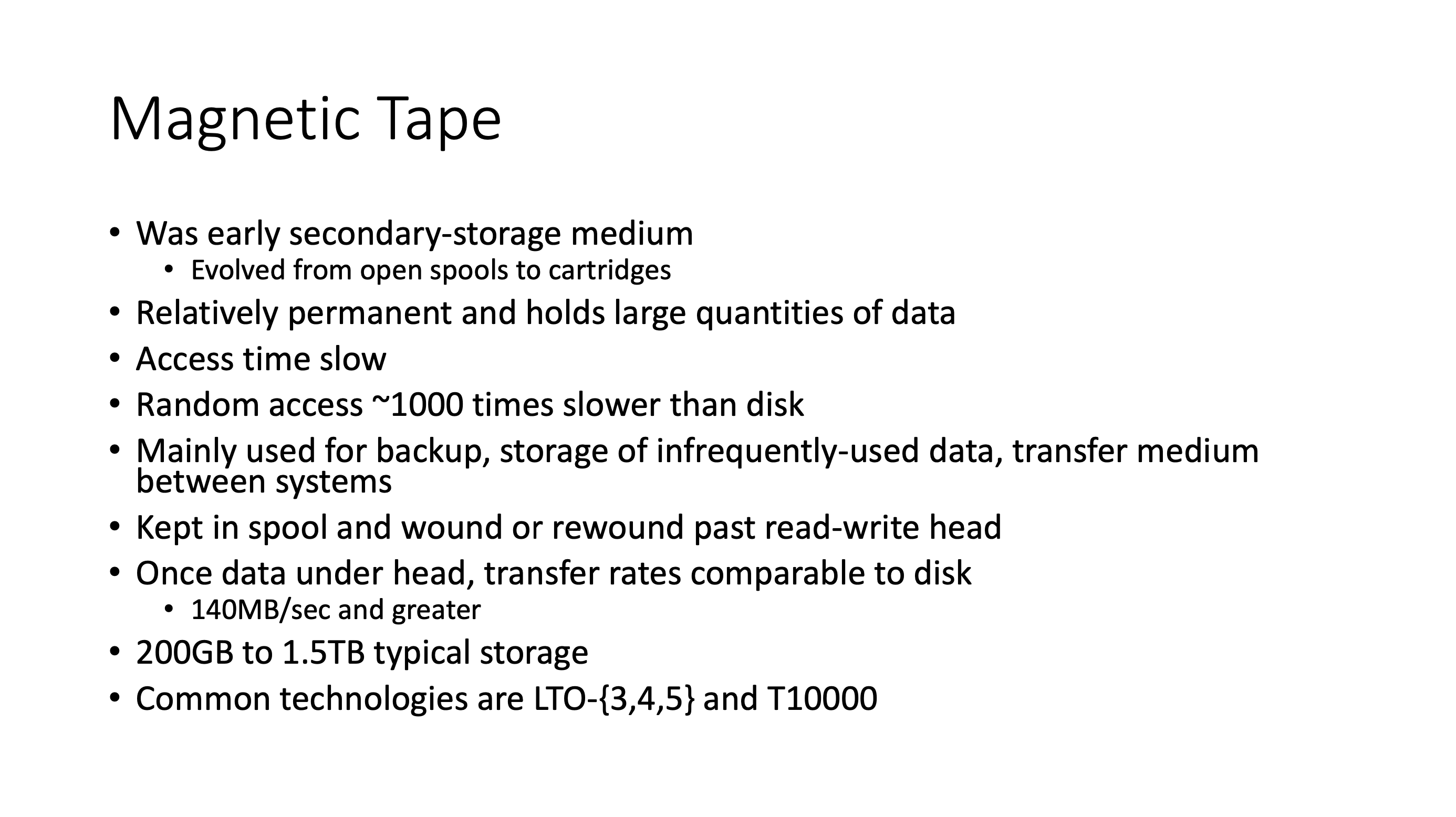
- magnetic tape remains in use today as a tertiary storage
- ideal for backup/logs
Disks vs memory #
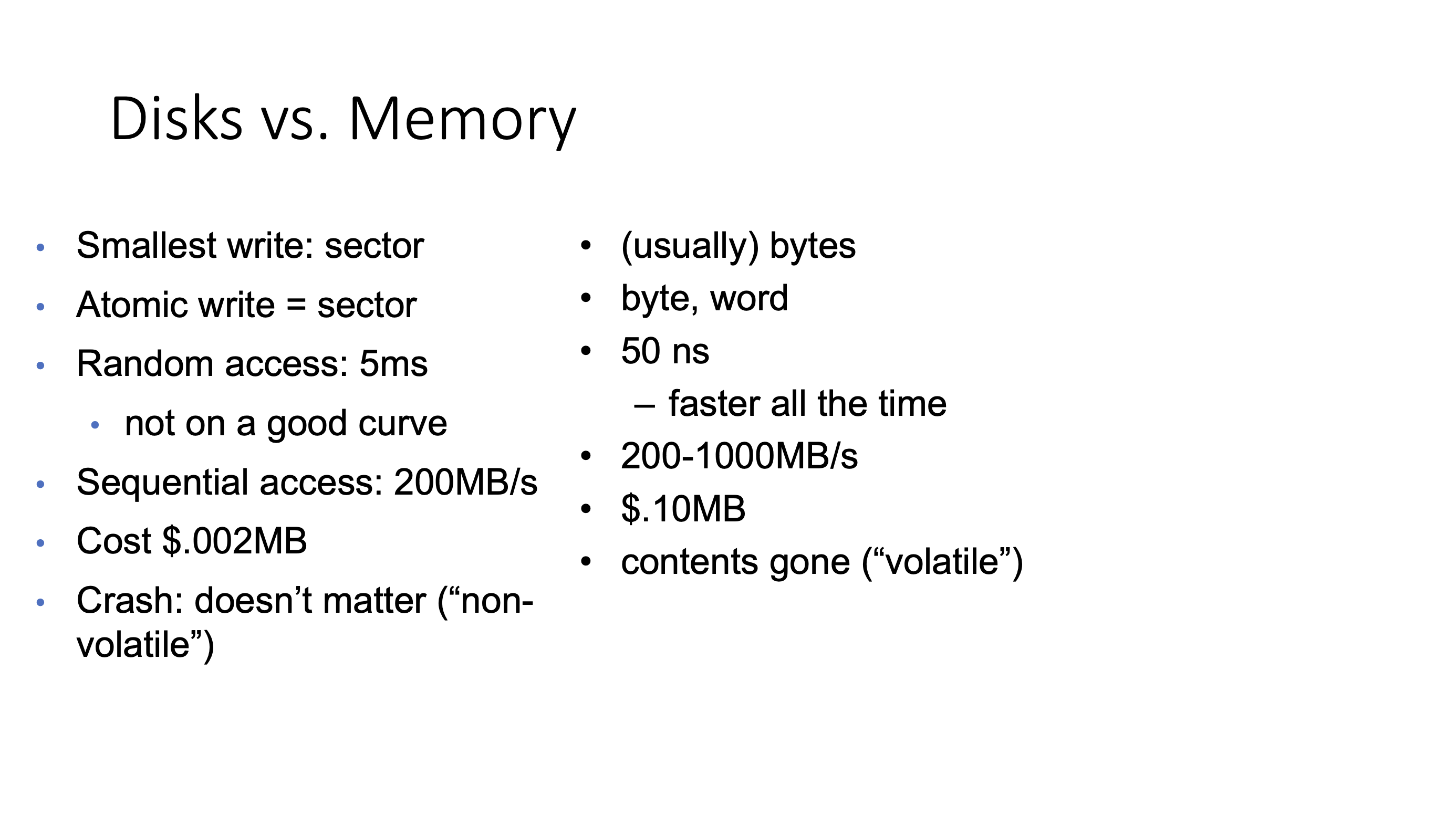
Disk scheduling #
The one component of disk latency that we have the ability to optimize is the seek time. If we minimize the seek distance we can minimize the seek time.
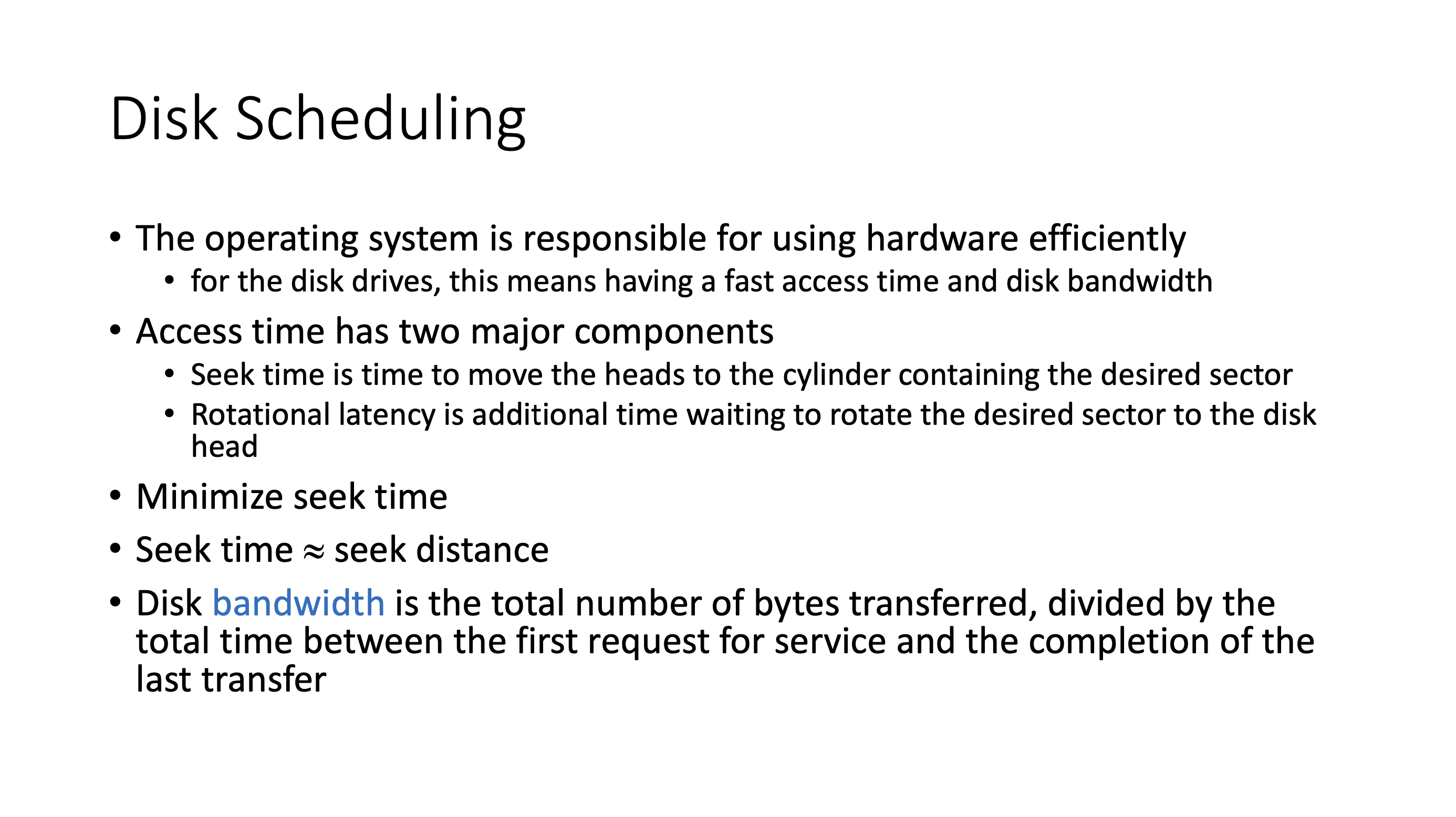
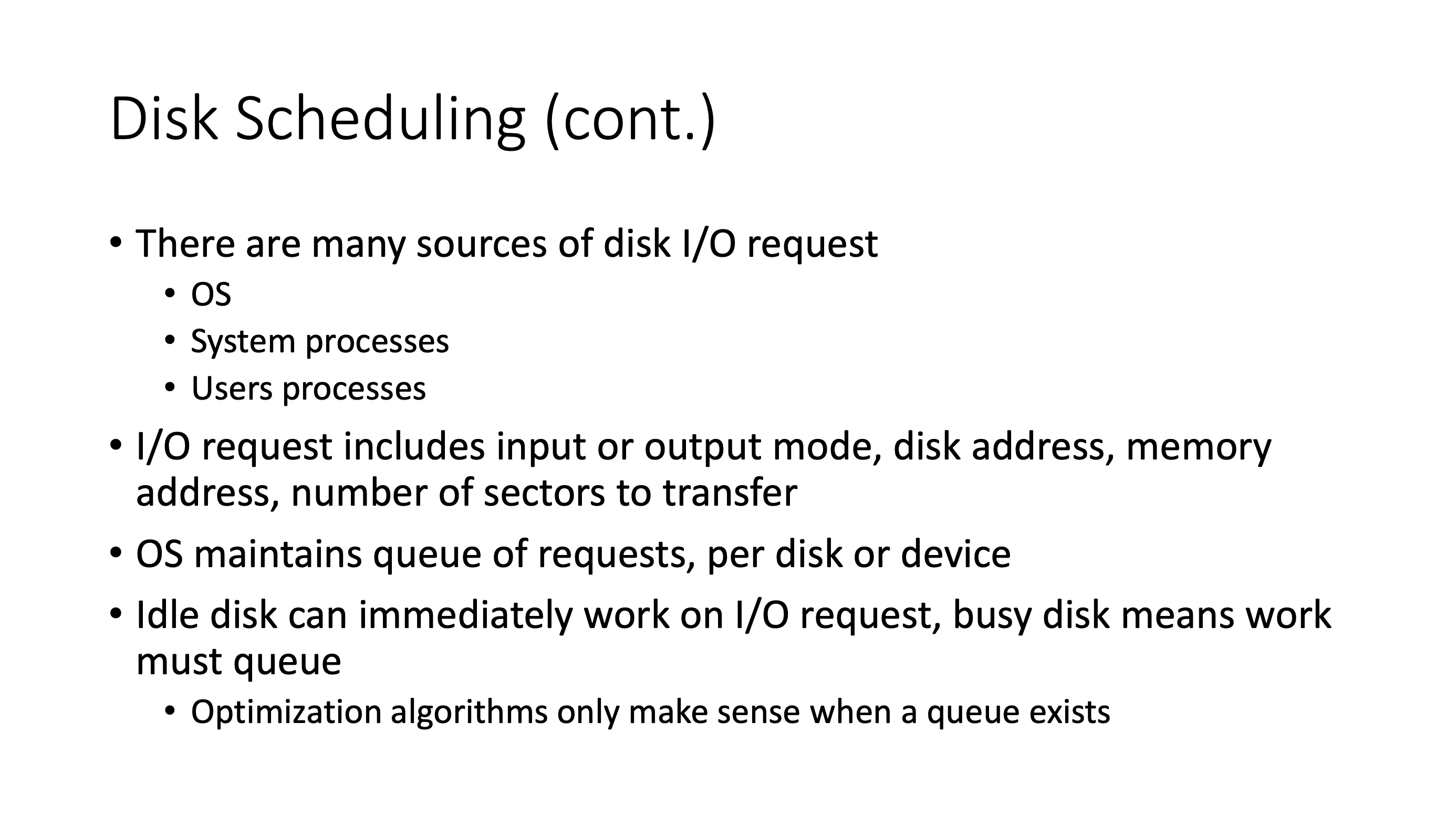
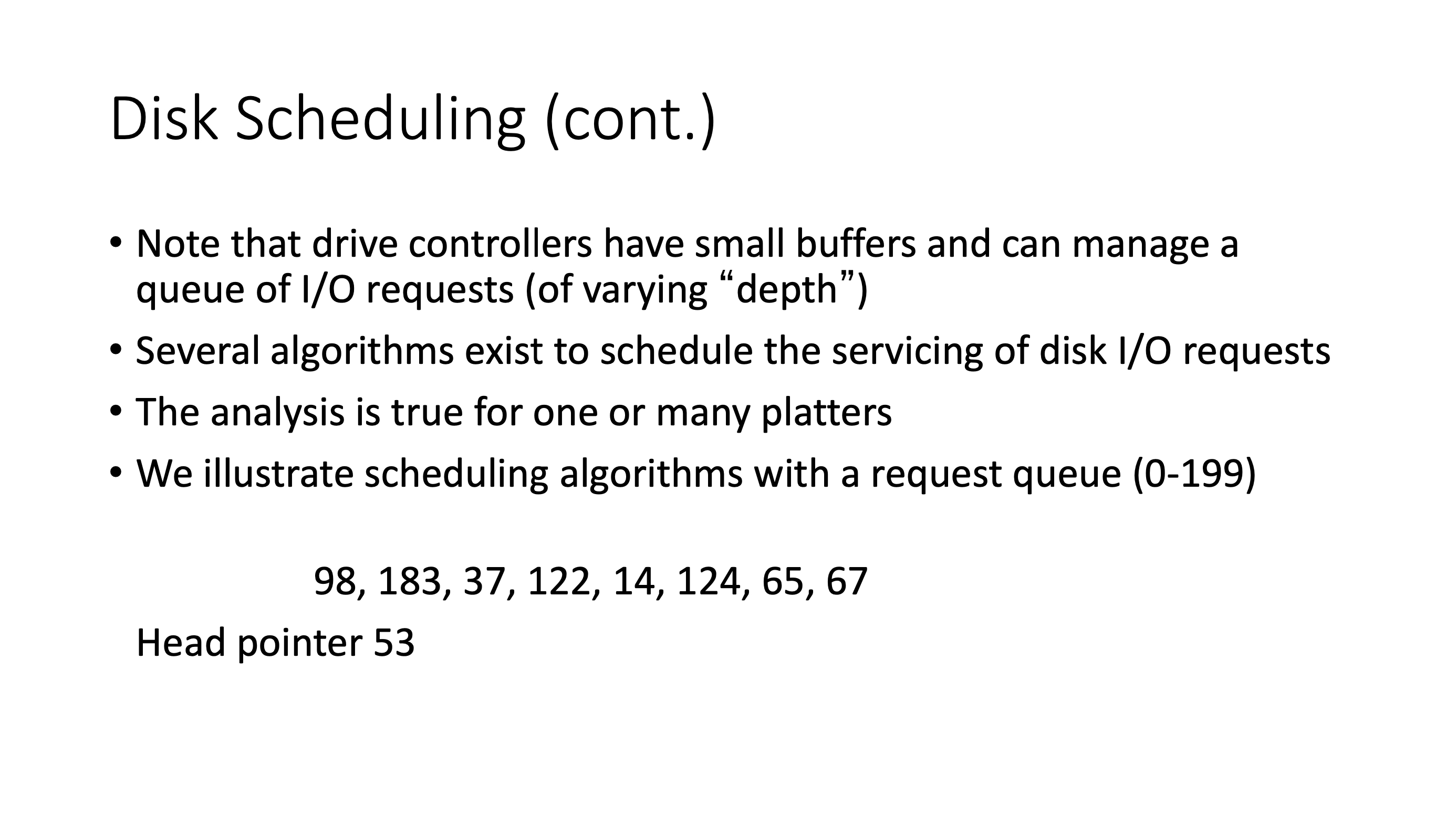
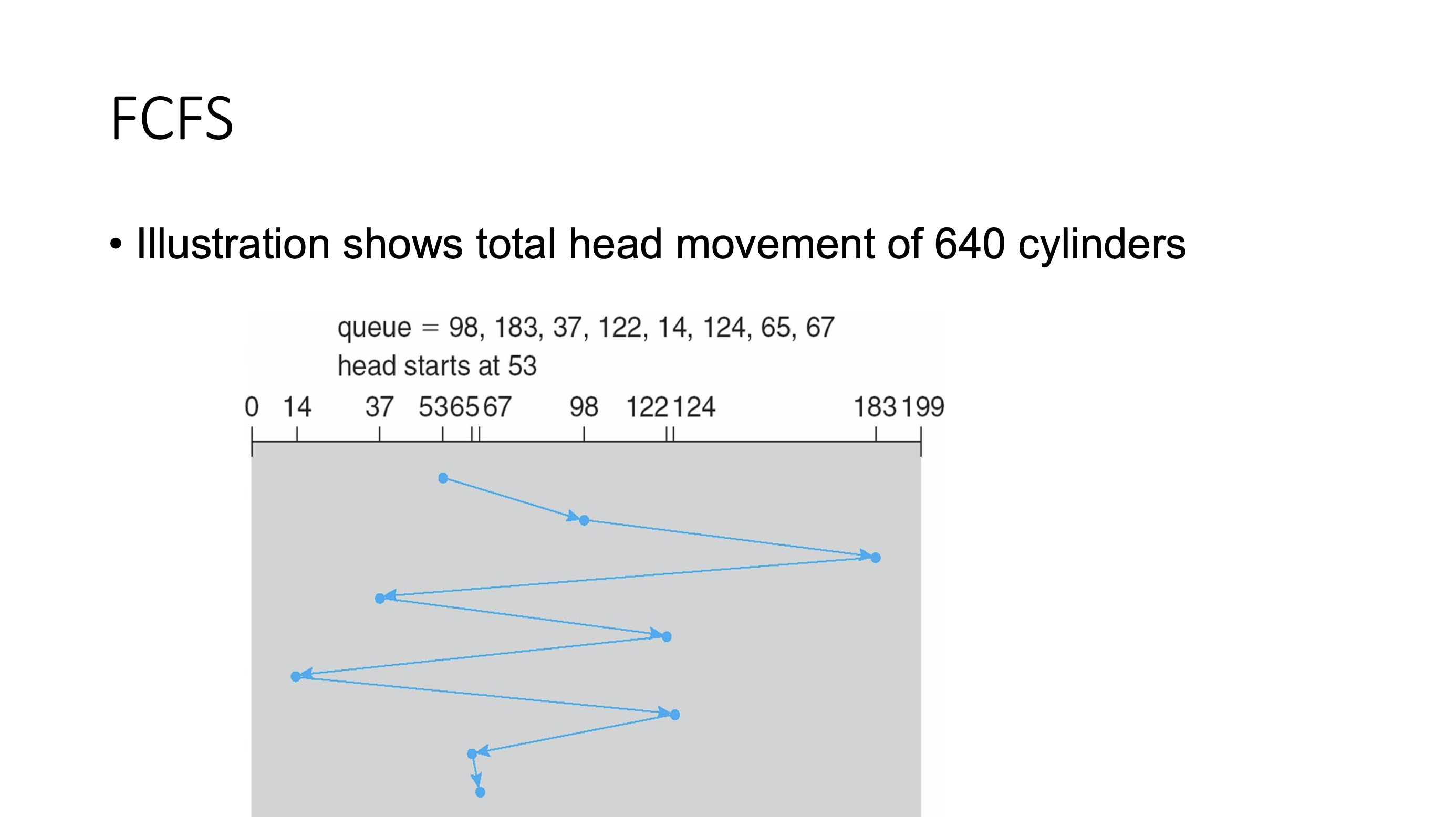
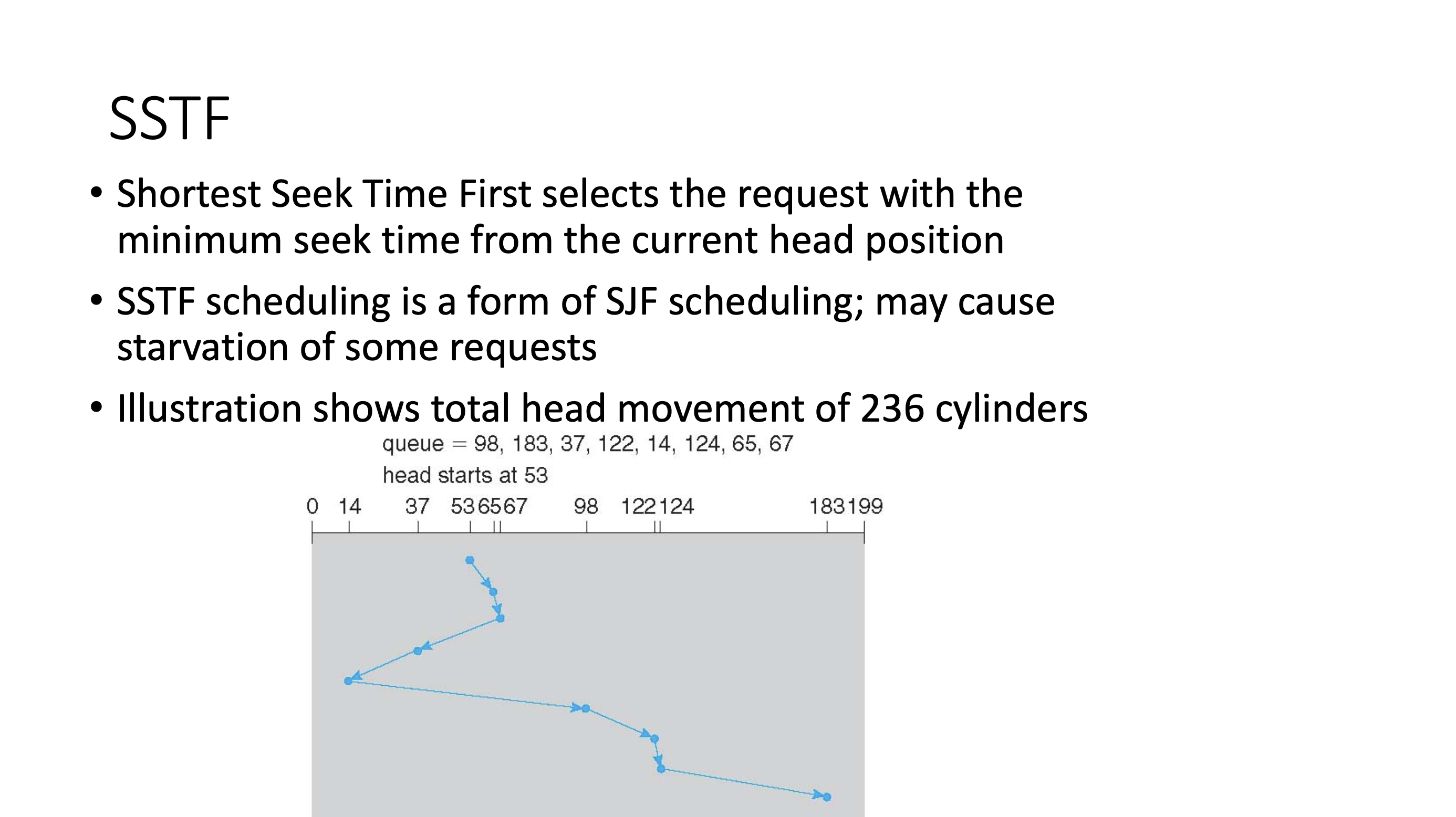
- needs to know the entire sequence in advance
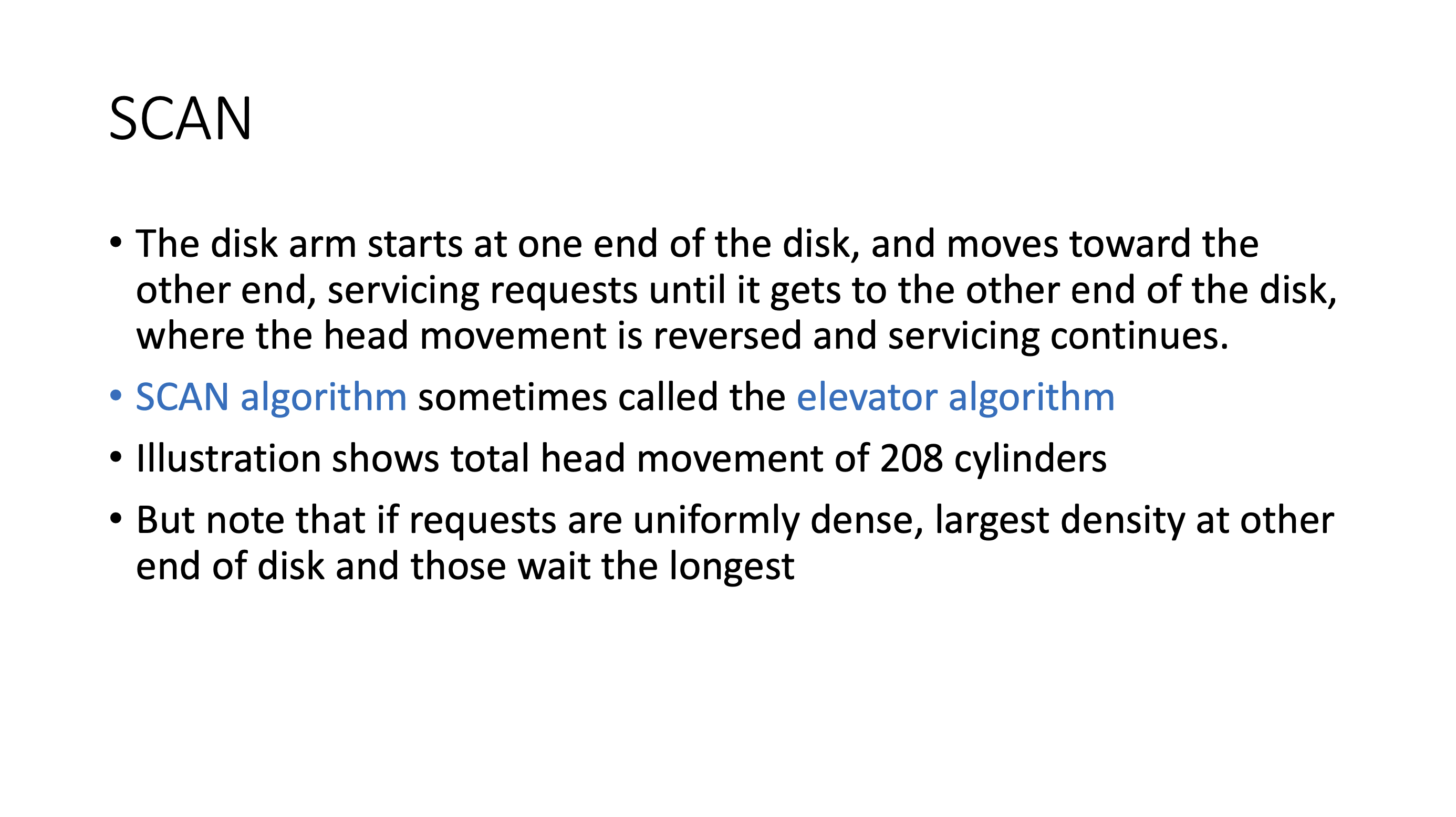
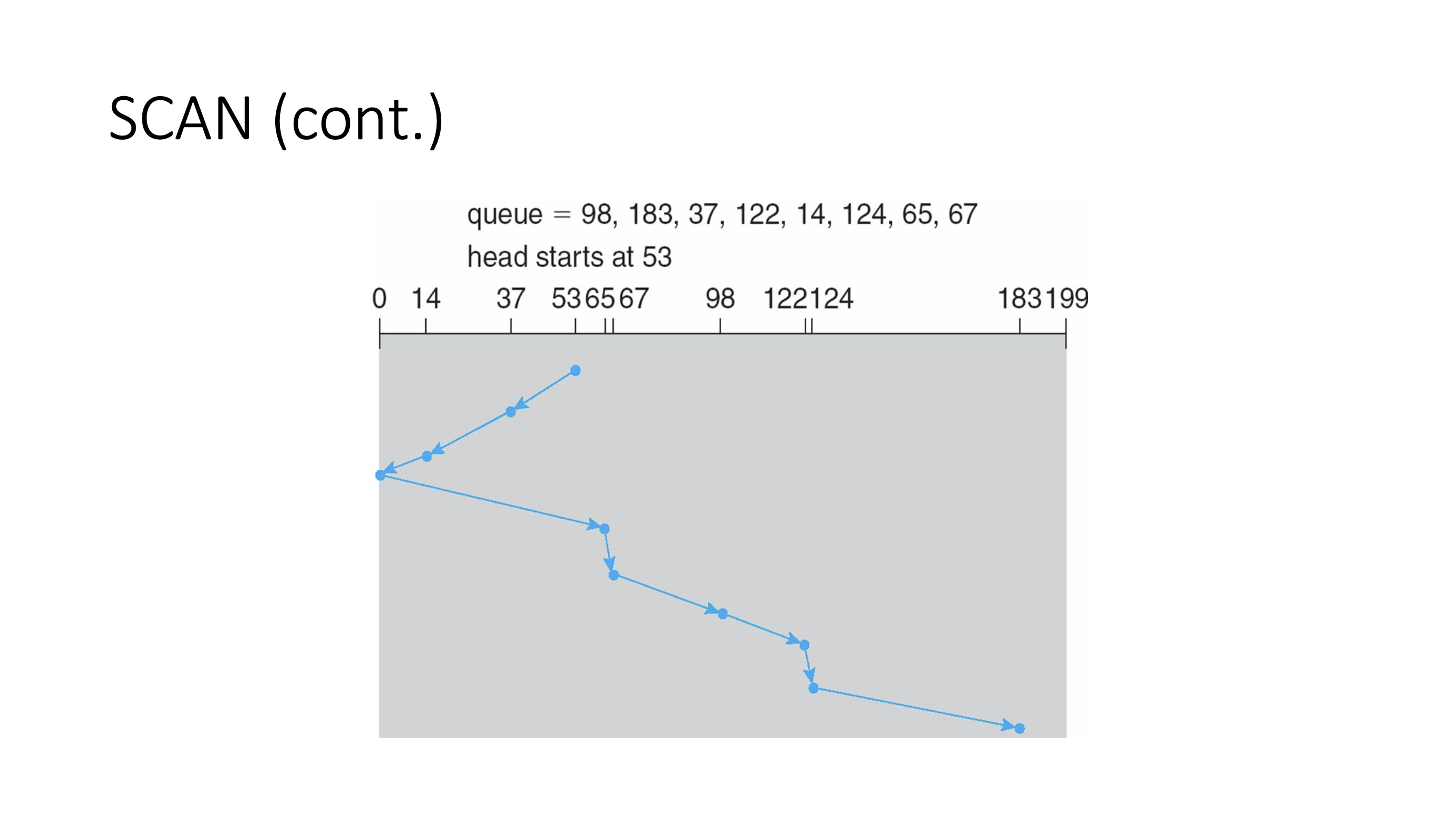
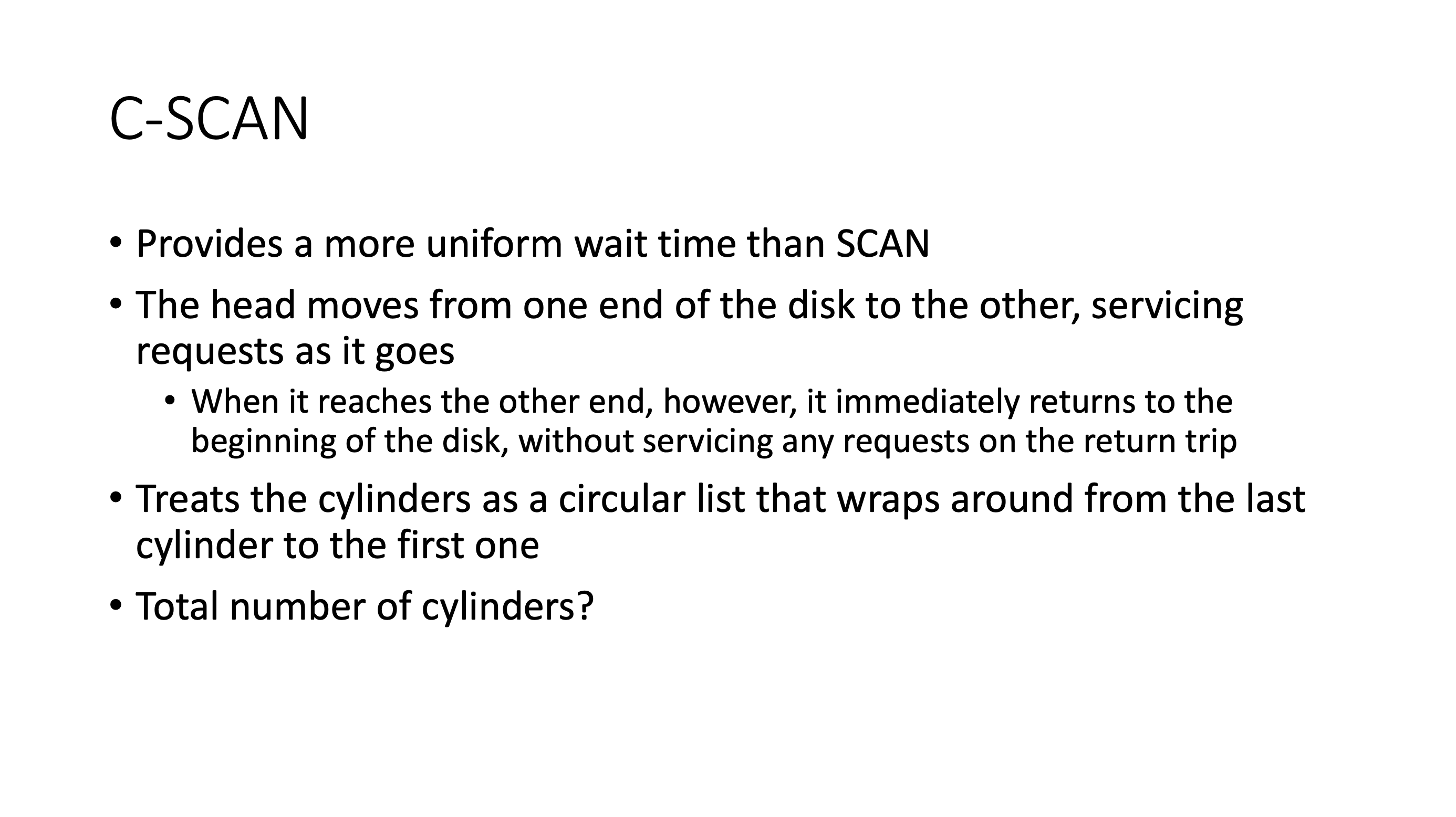
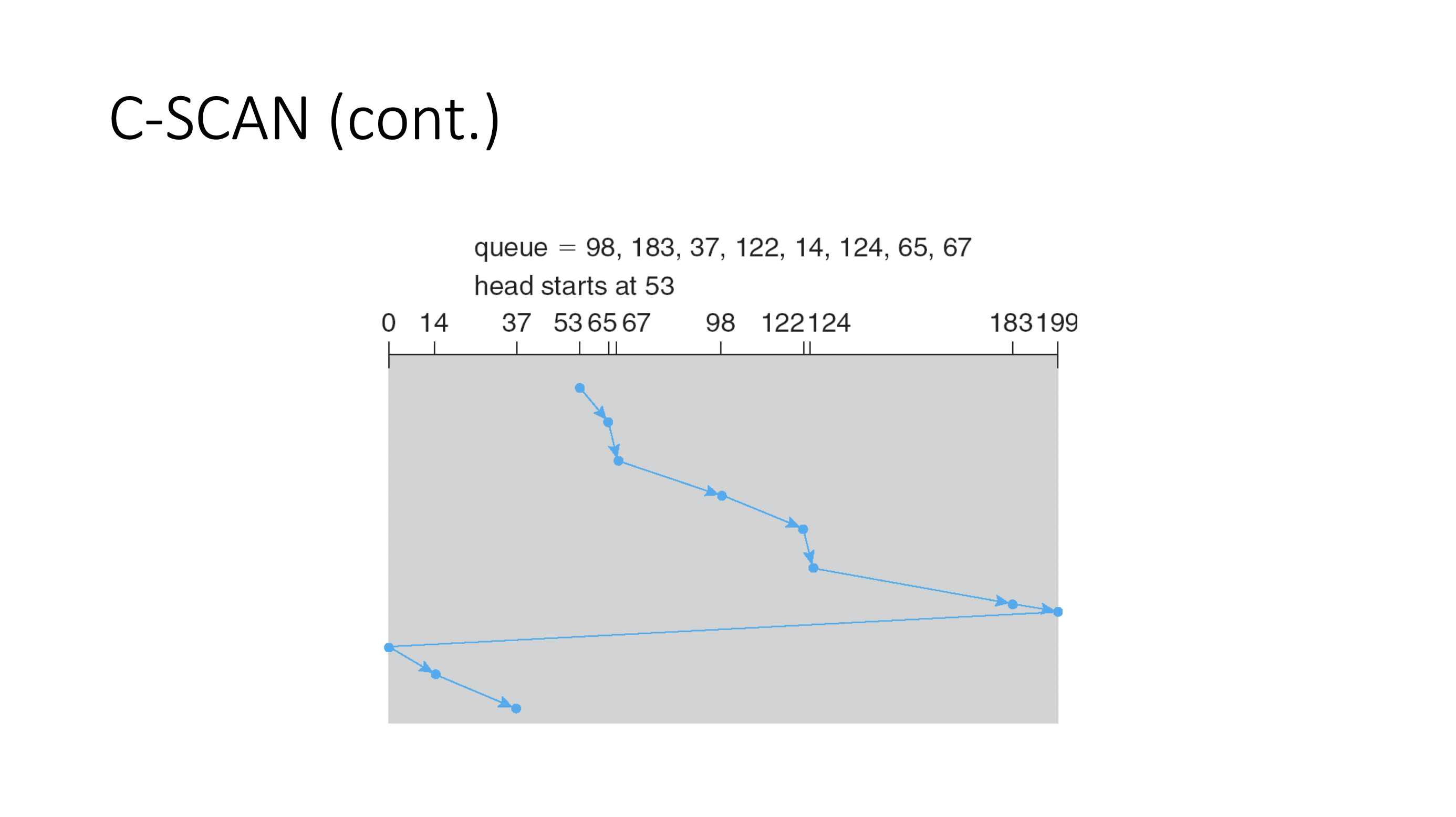
- remember that the “giant leap” here is still a physical movement
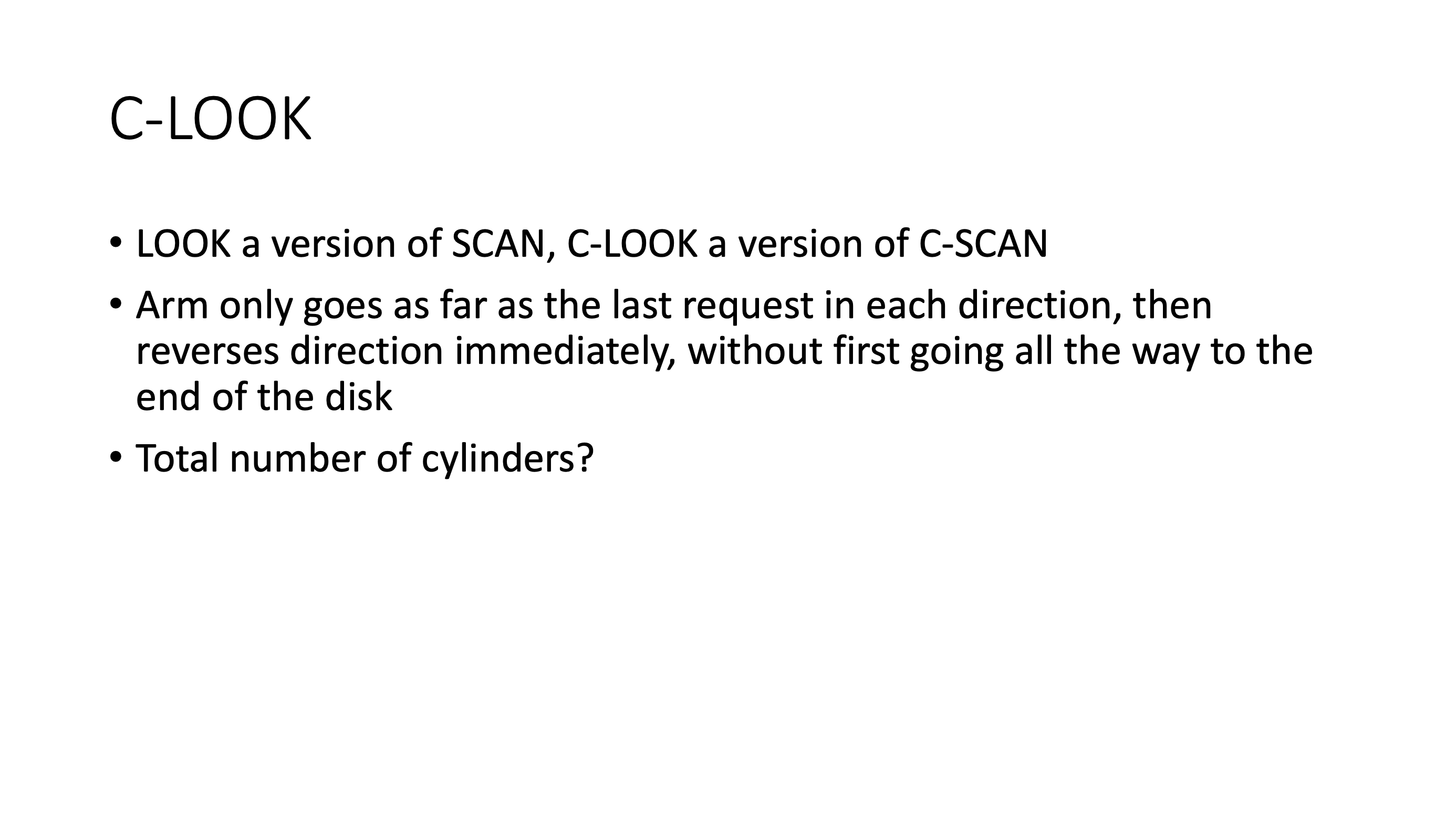
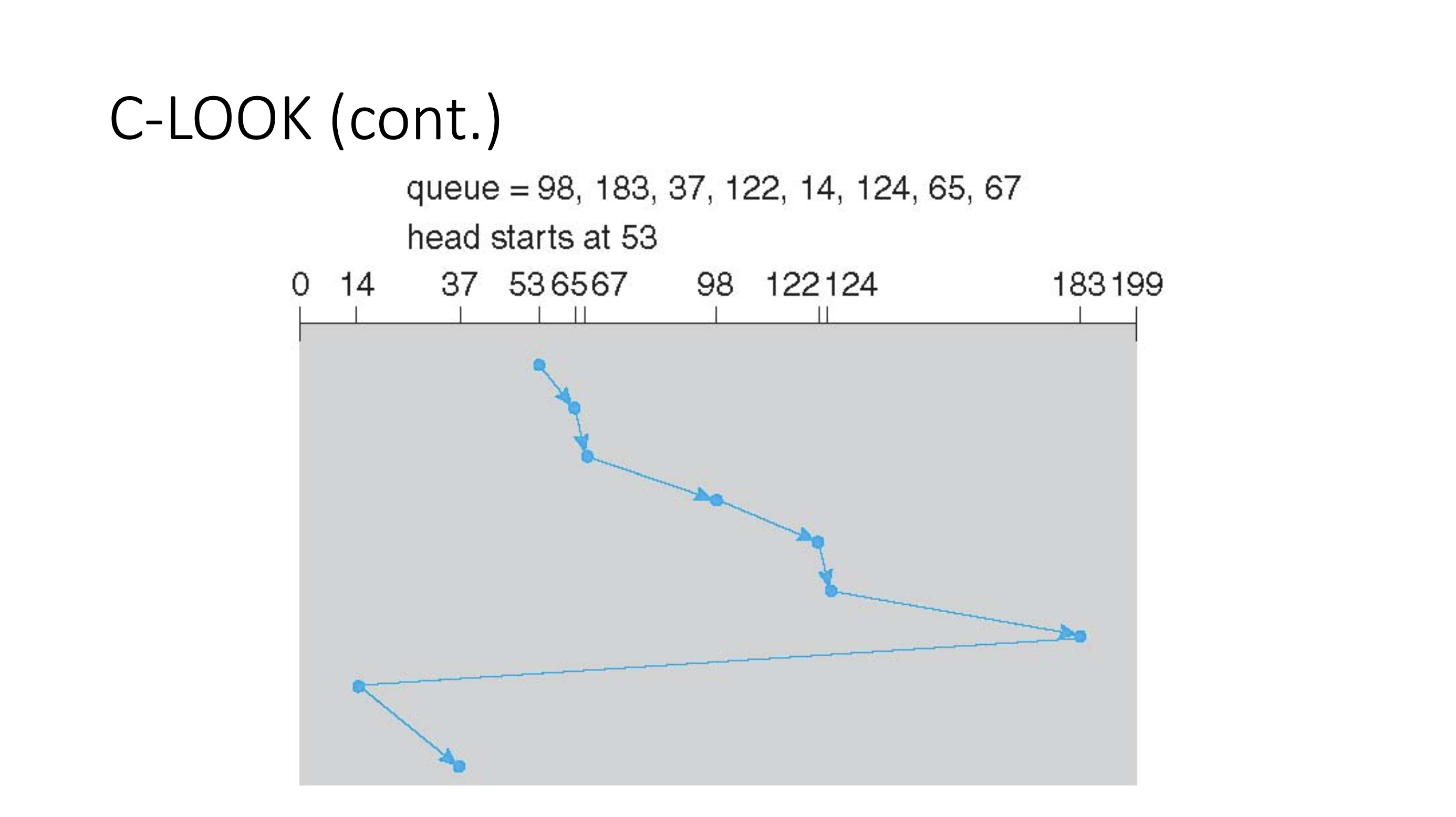
Selecting a disk scheduling algorithm #
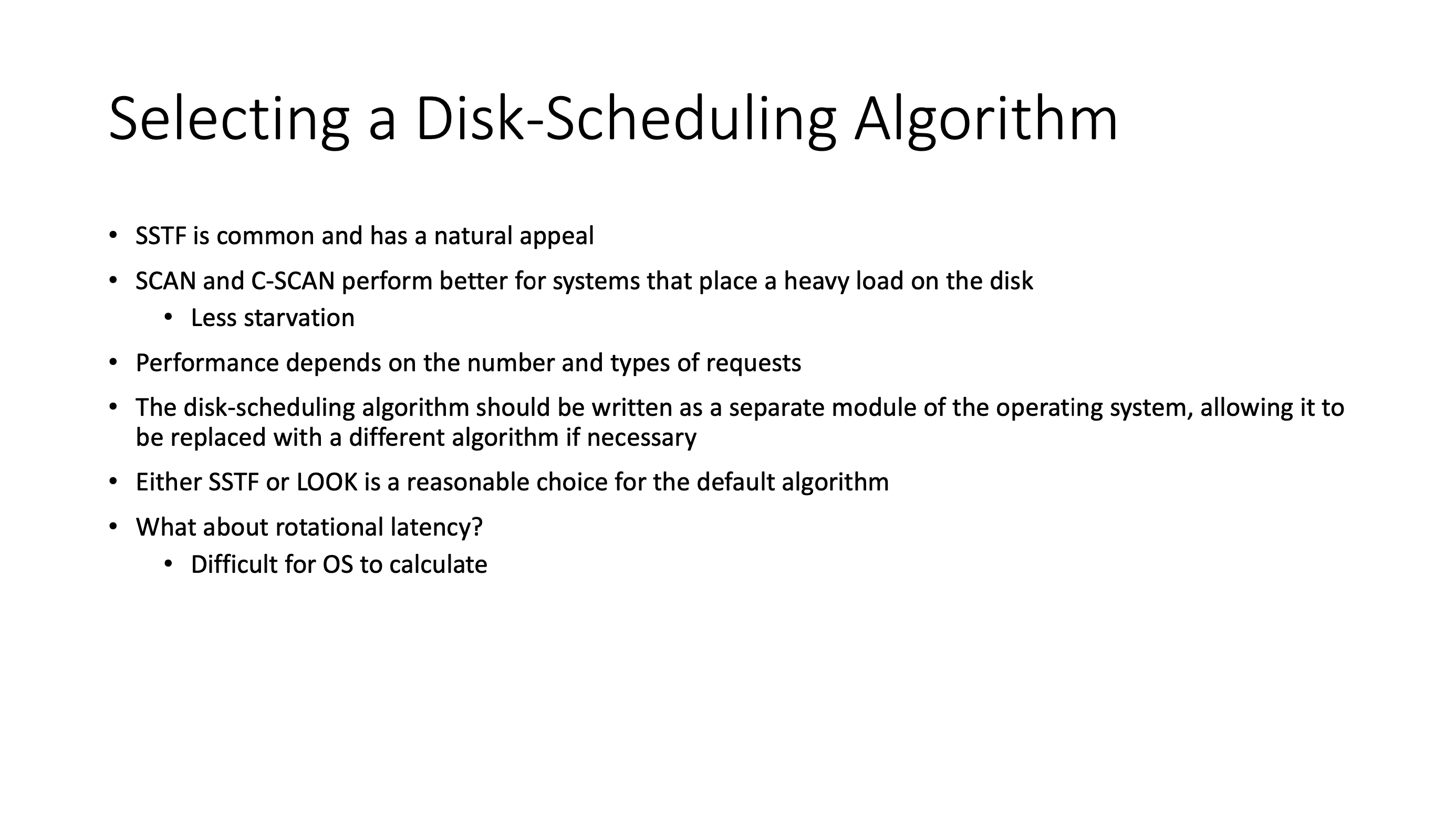
RAID #
